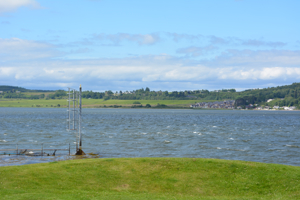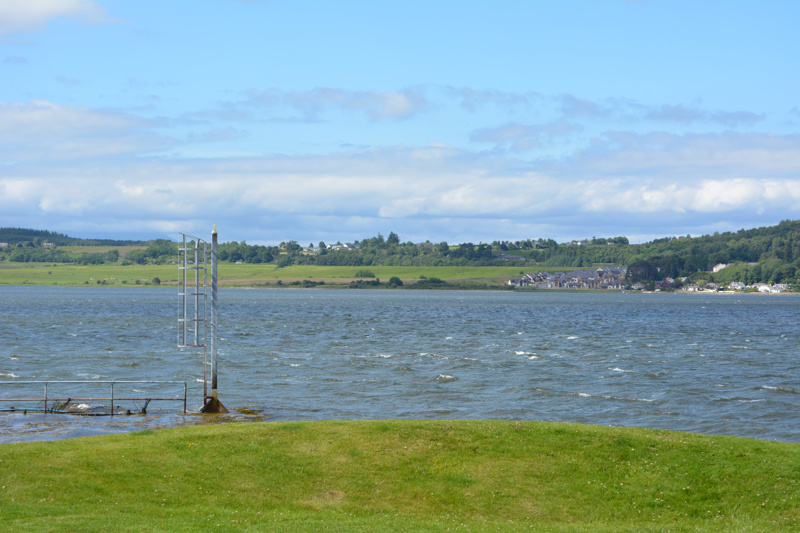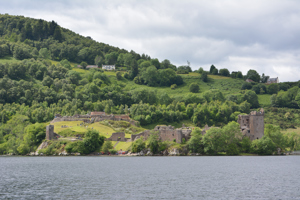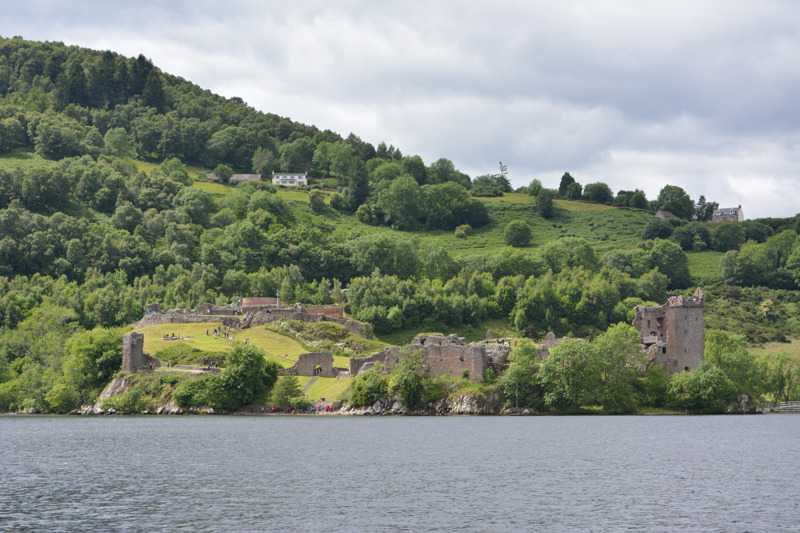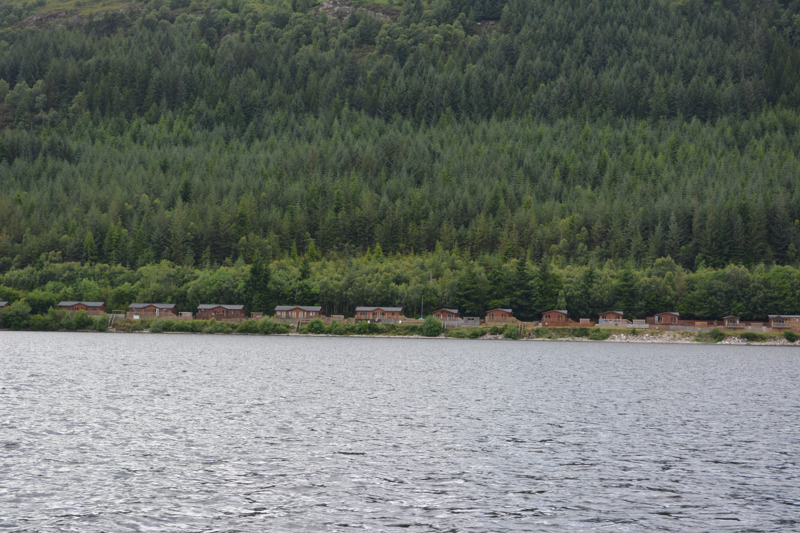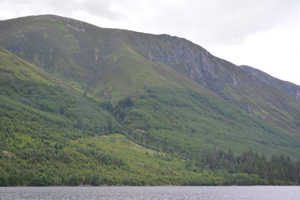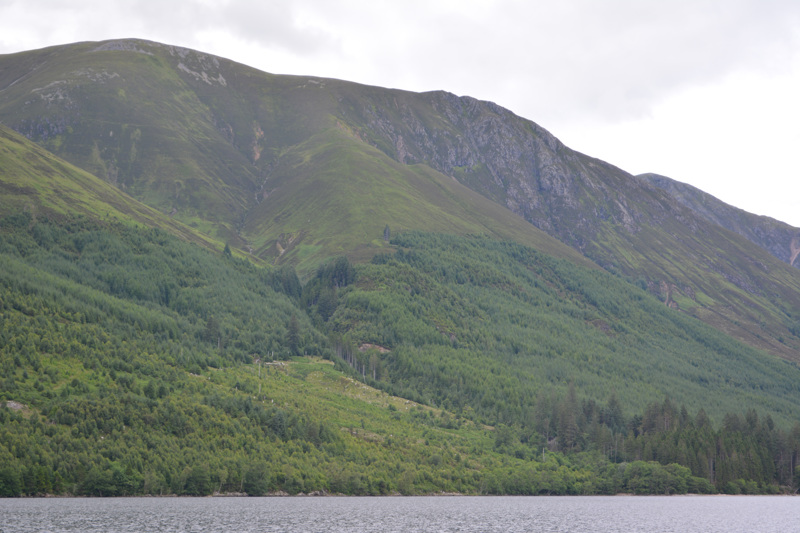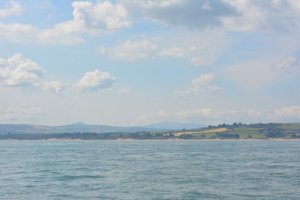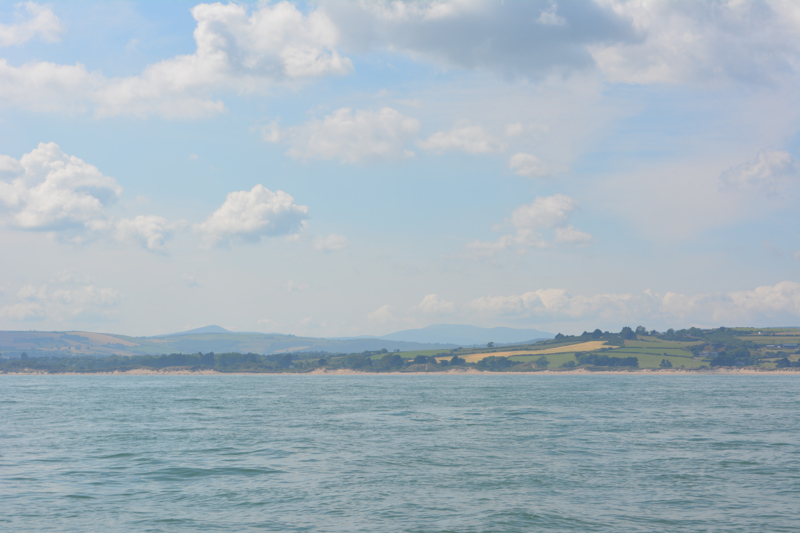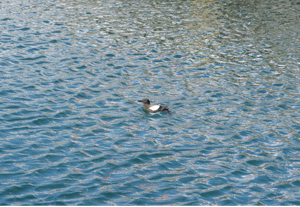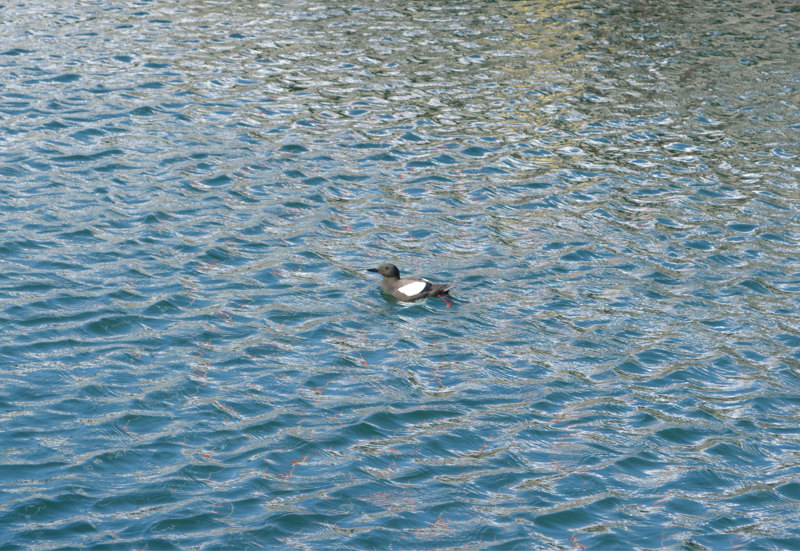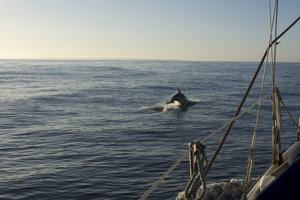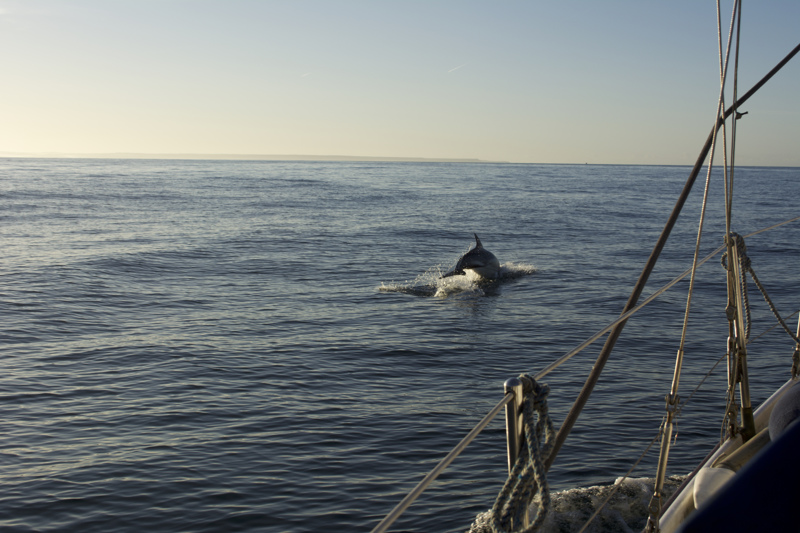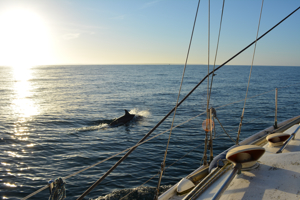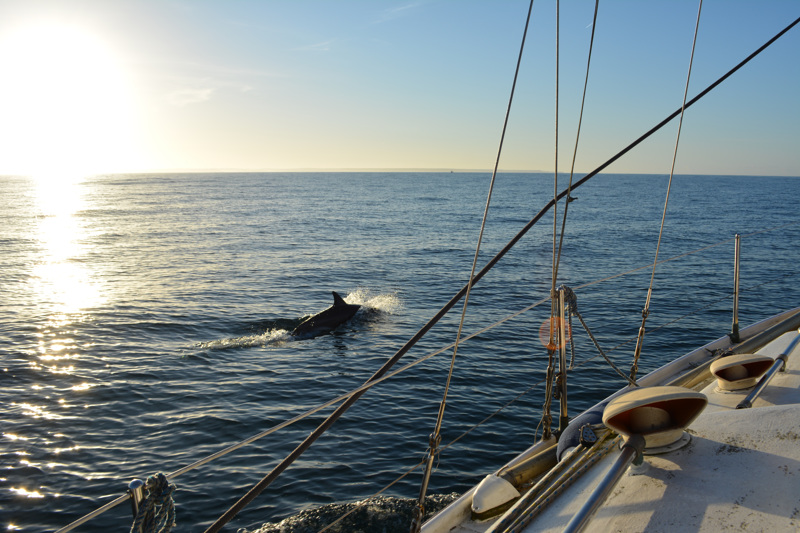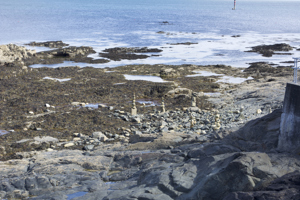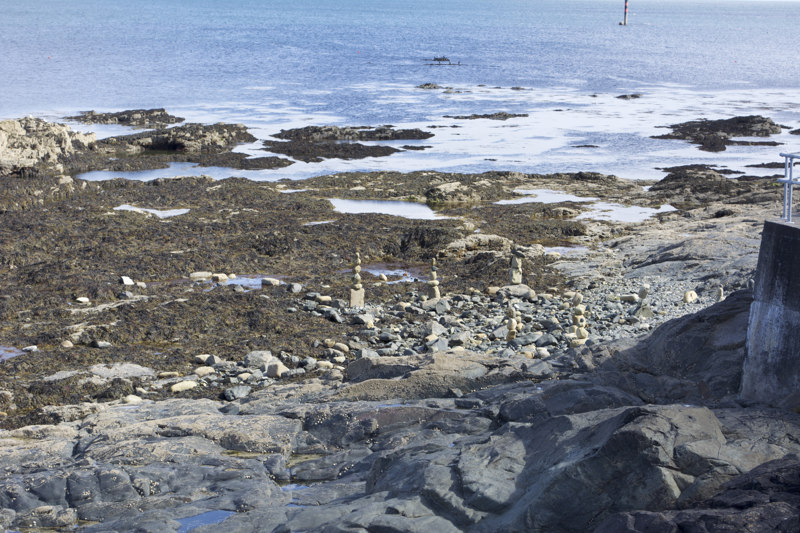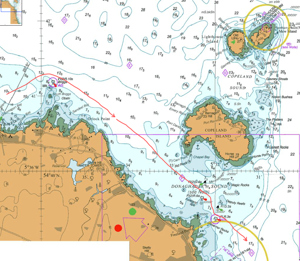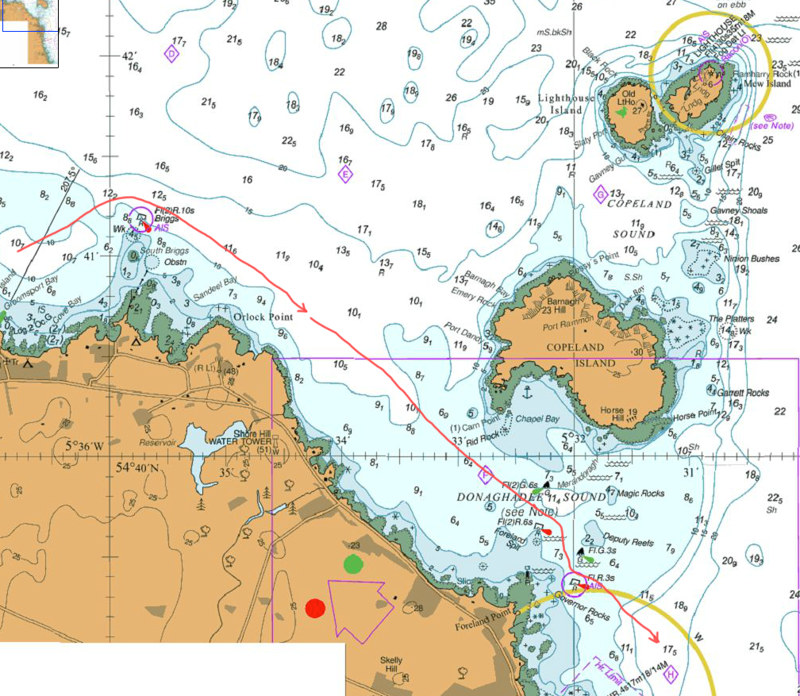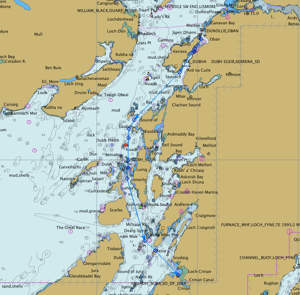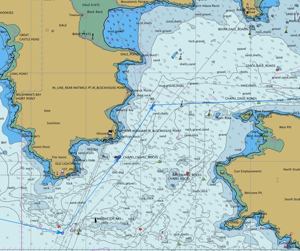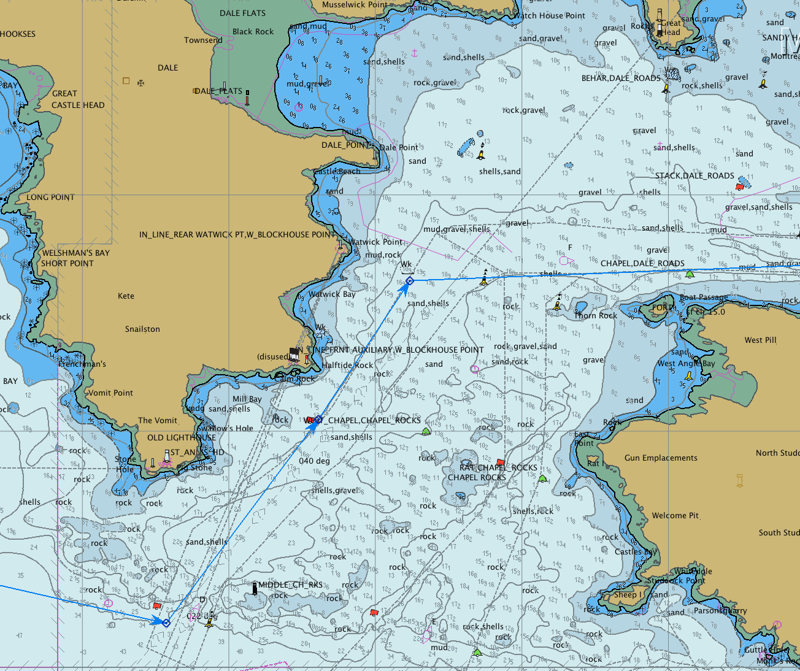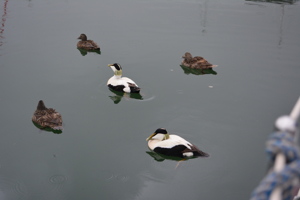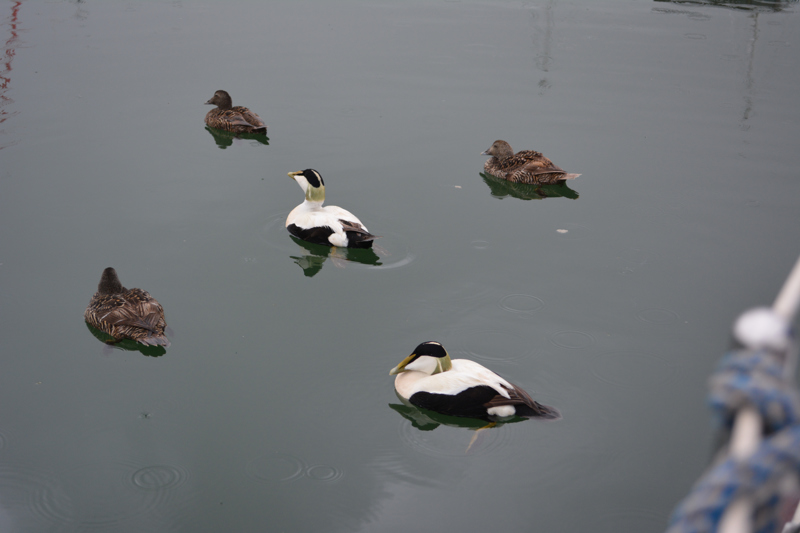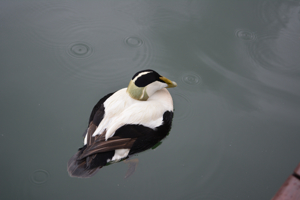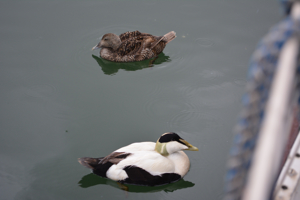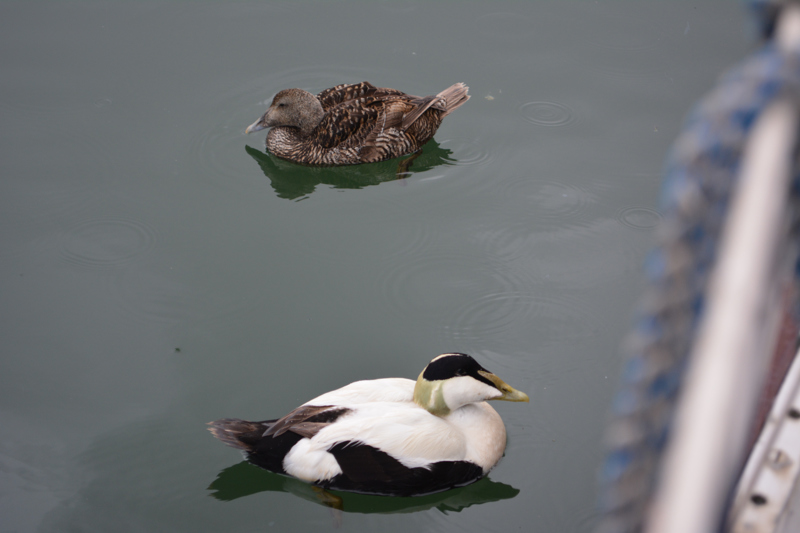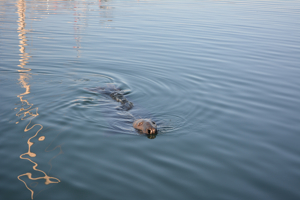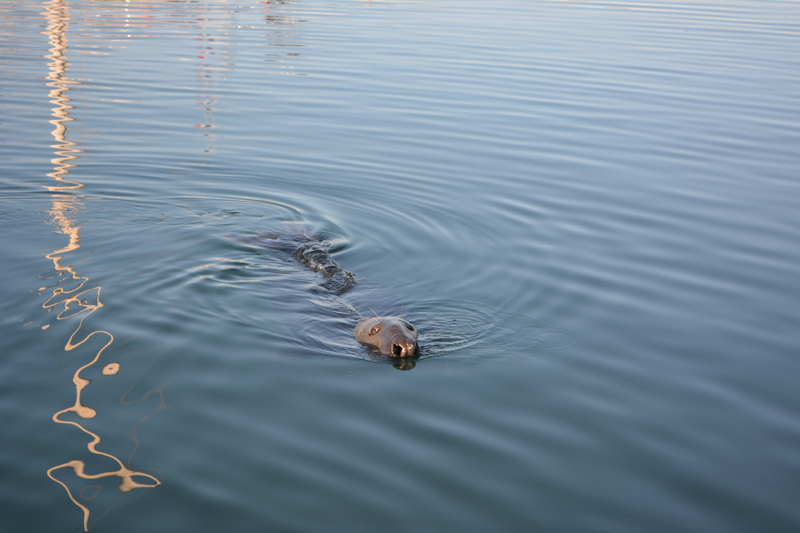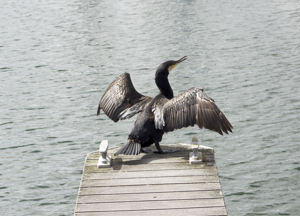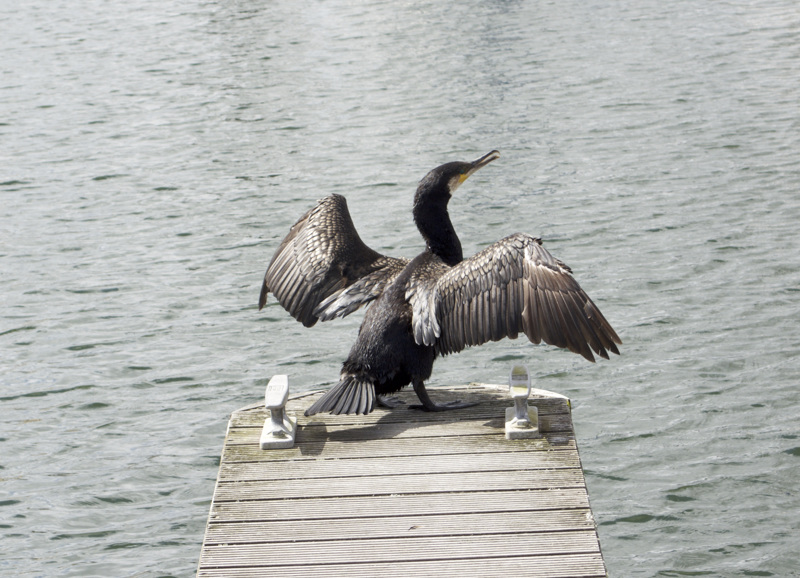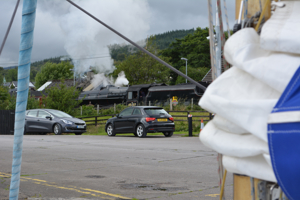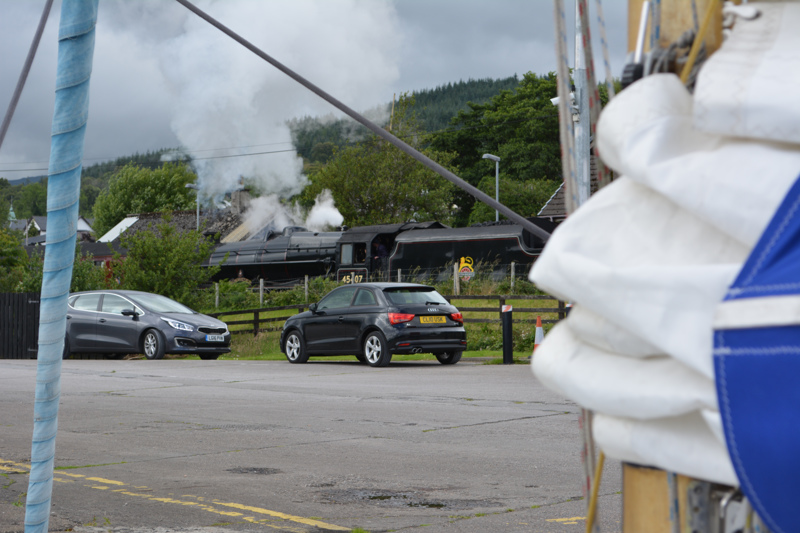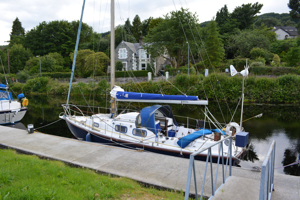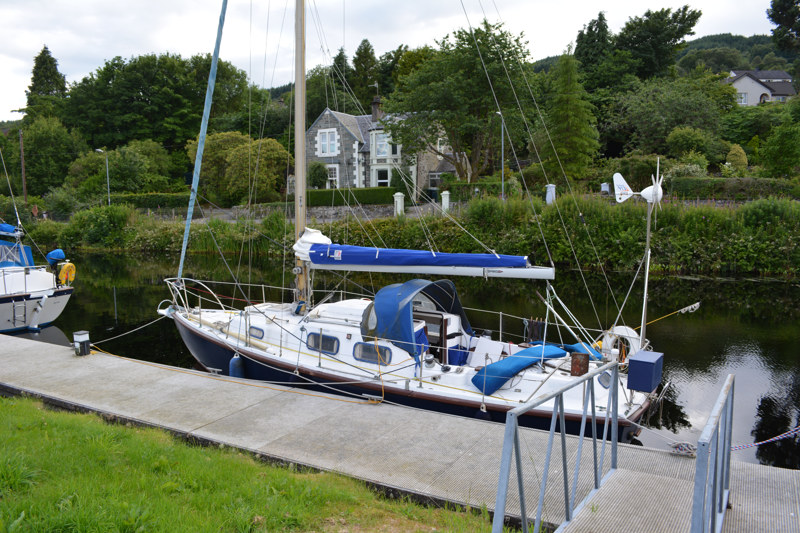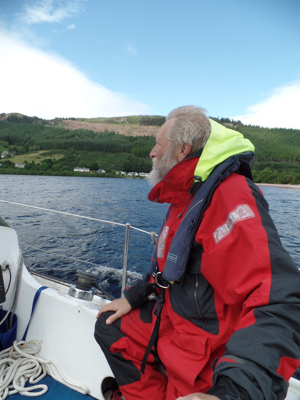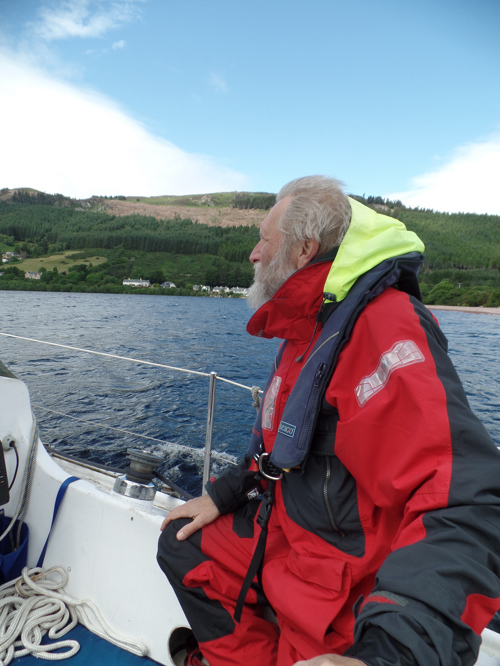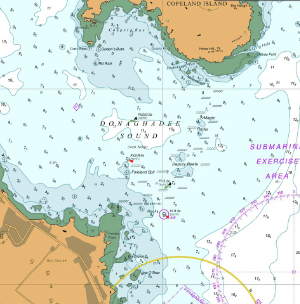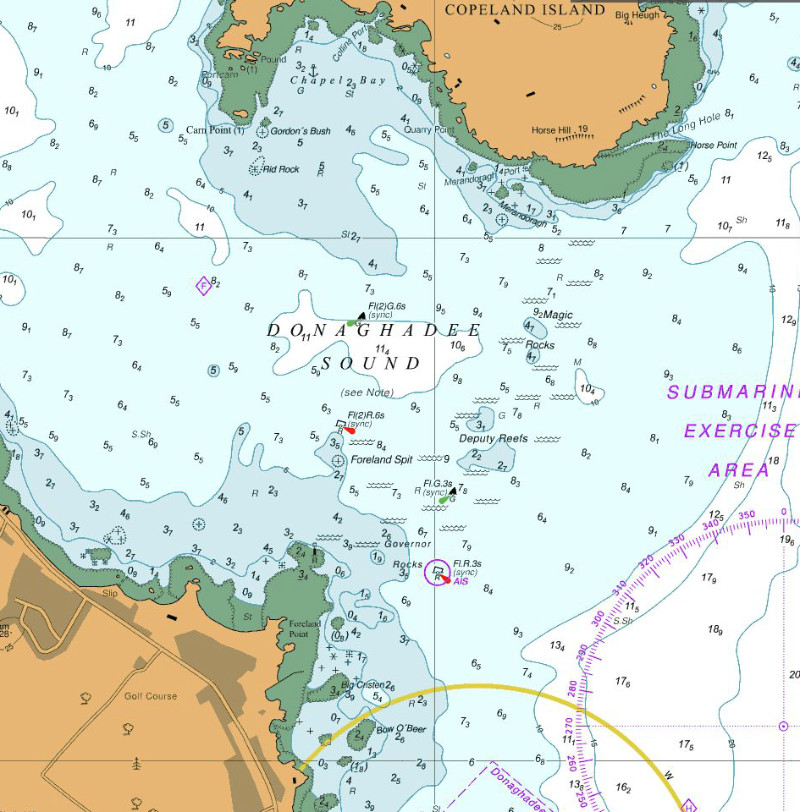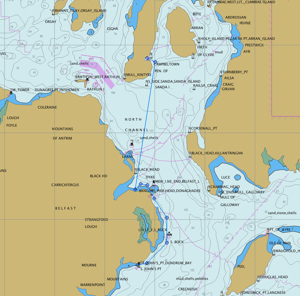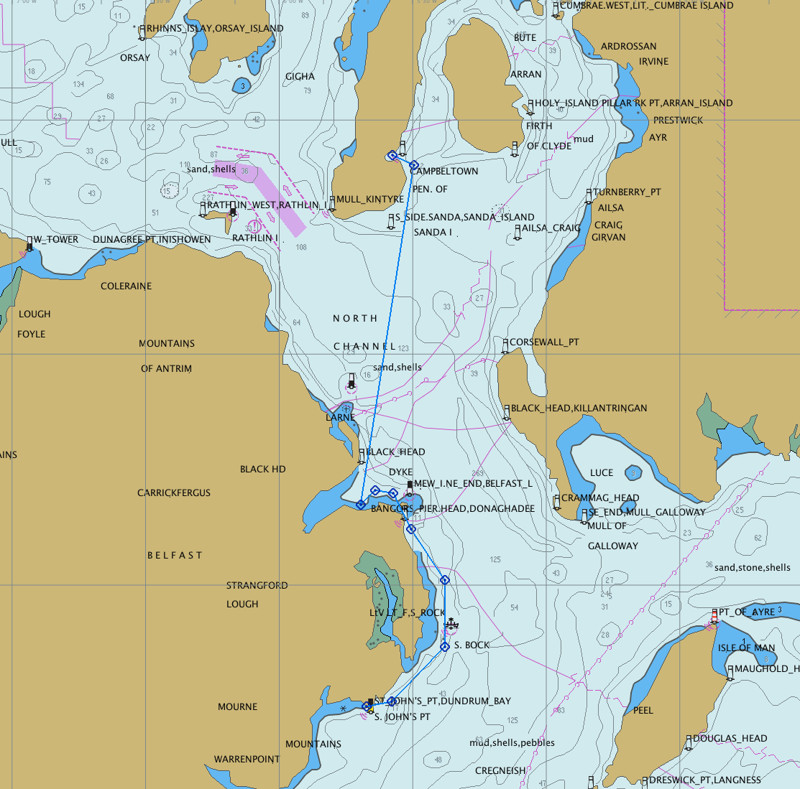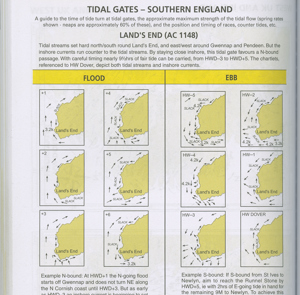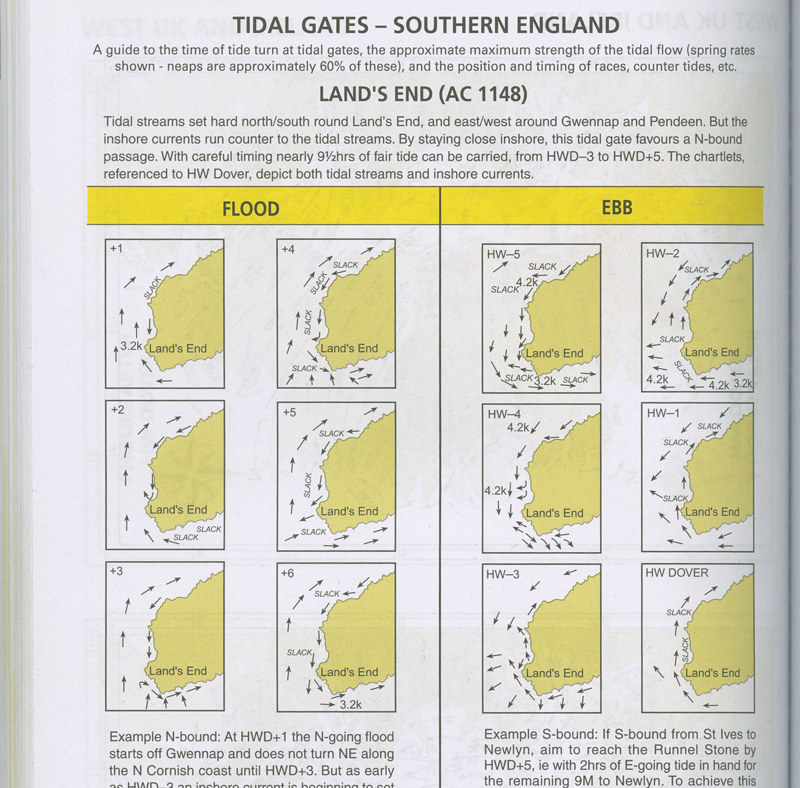Sondry Matteres:
(everything else...)
















Sondry Matteres:
(everything else...)
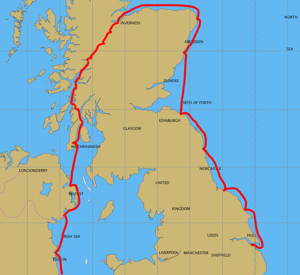

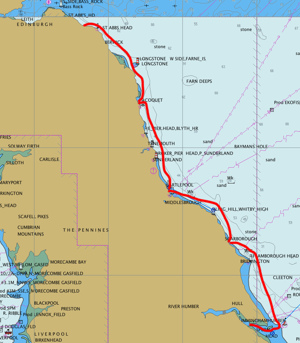
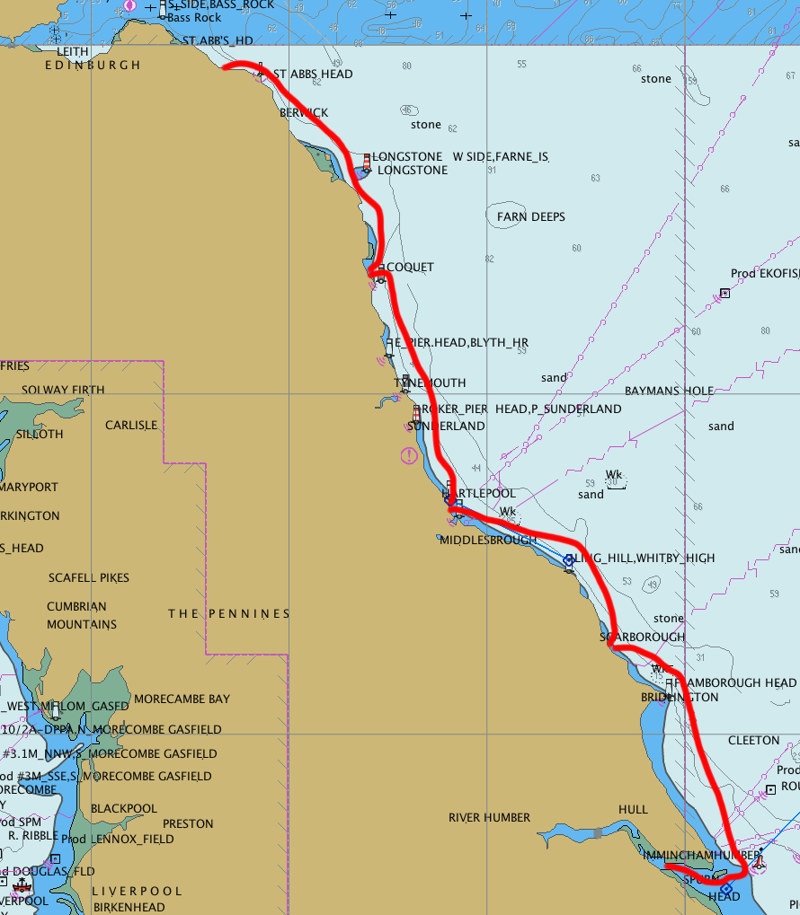
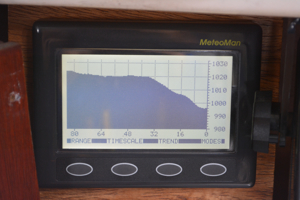
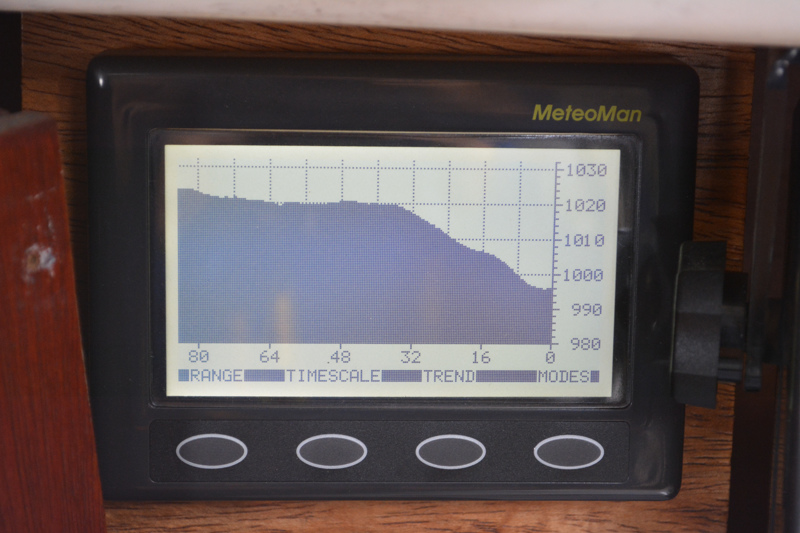
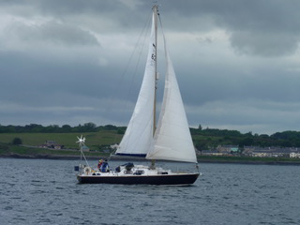
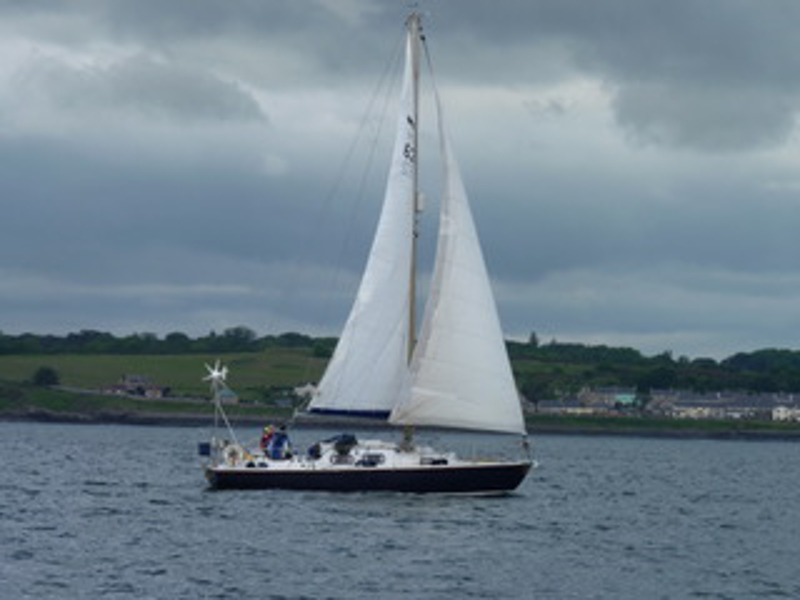
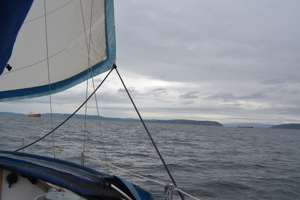
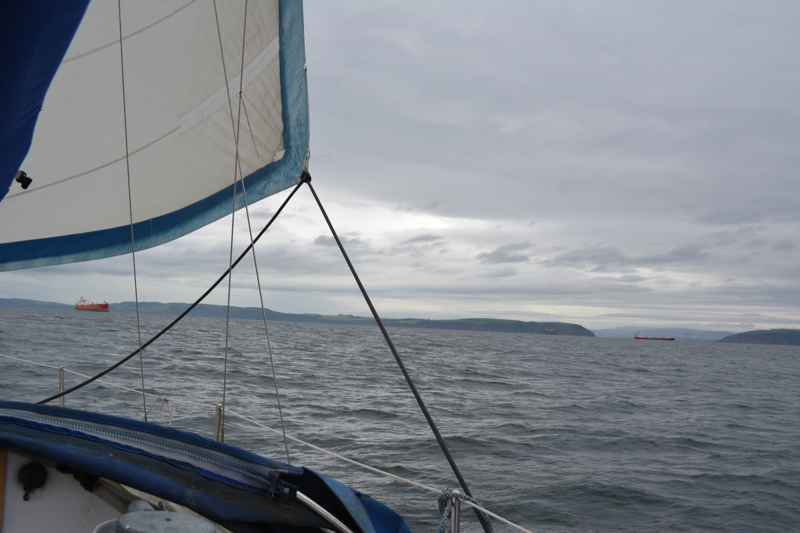
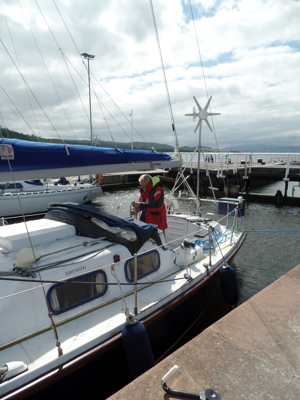
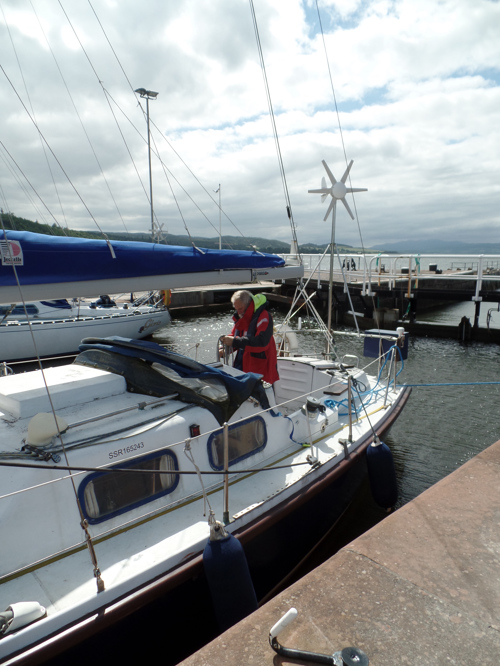
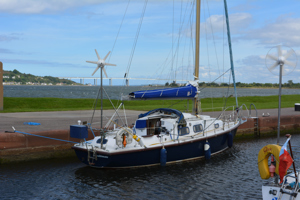
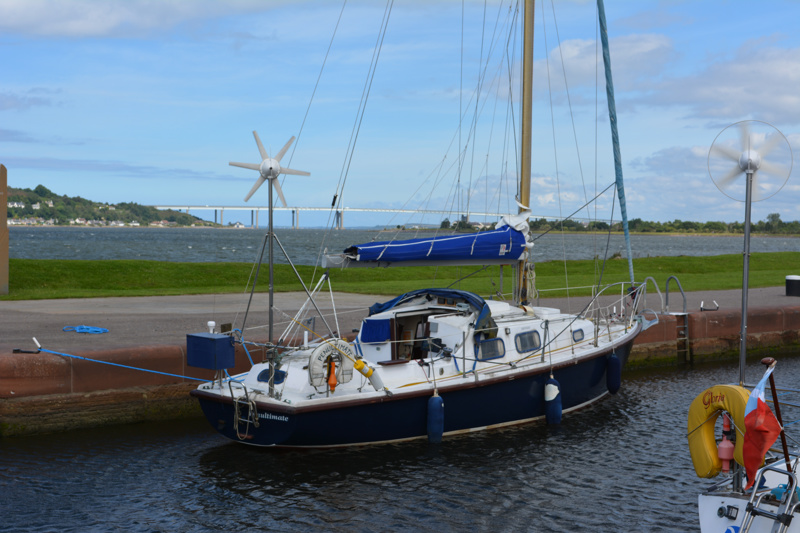
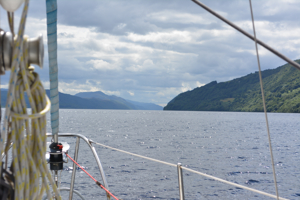
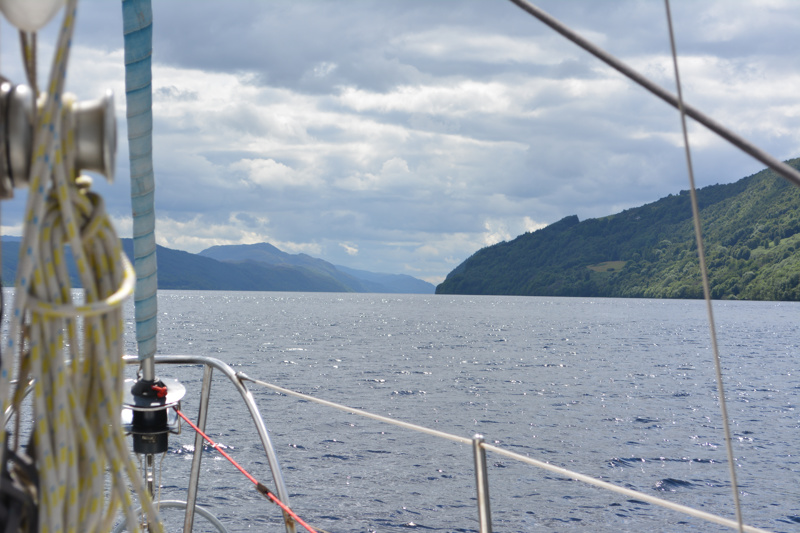
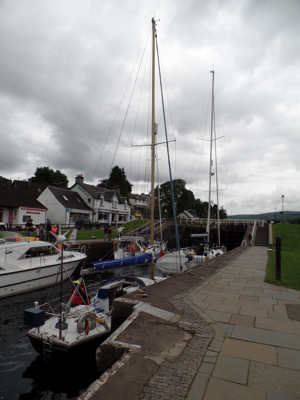
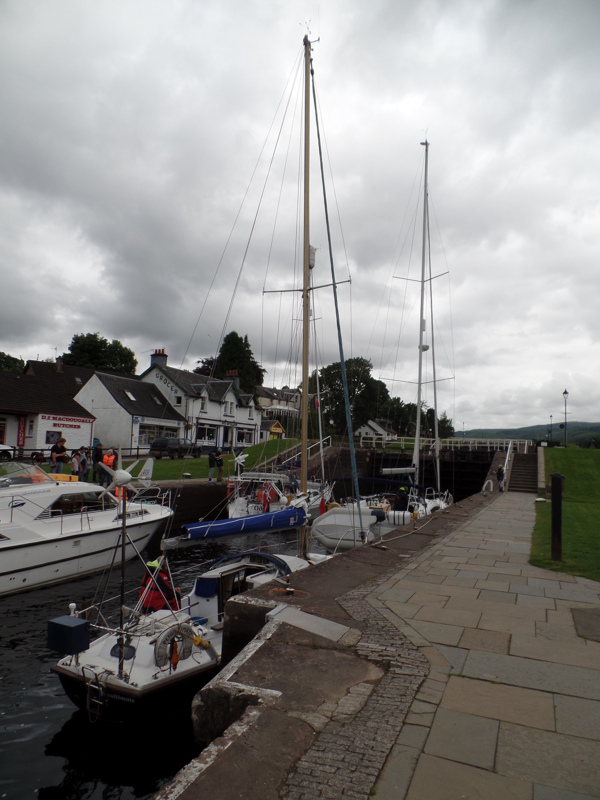
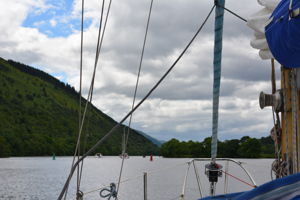
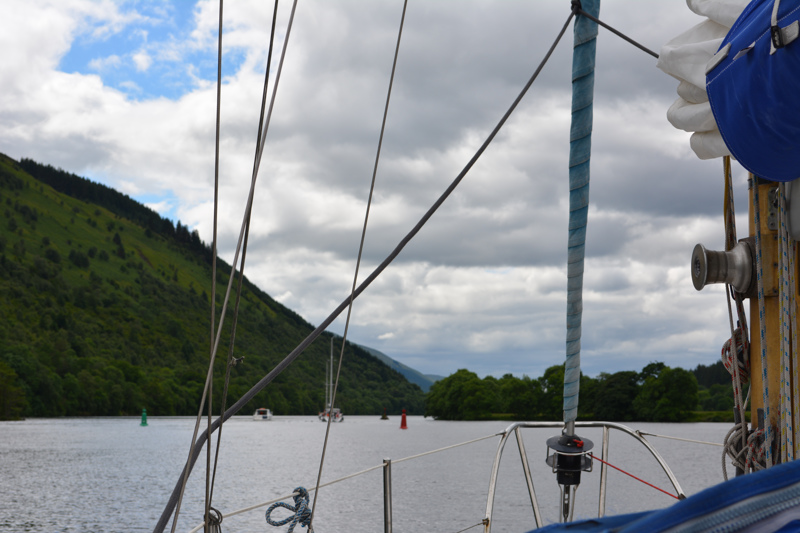
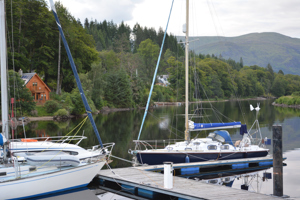
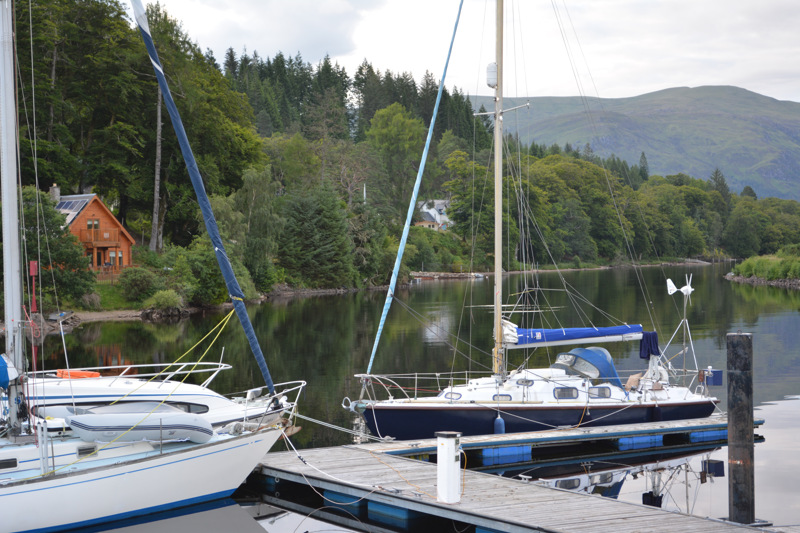
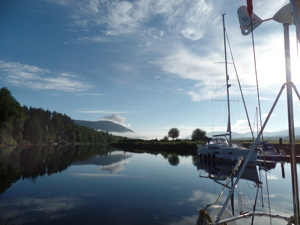
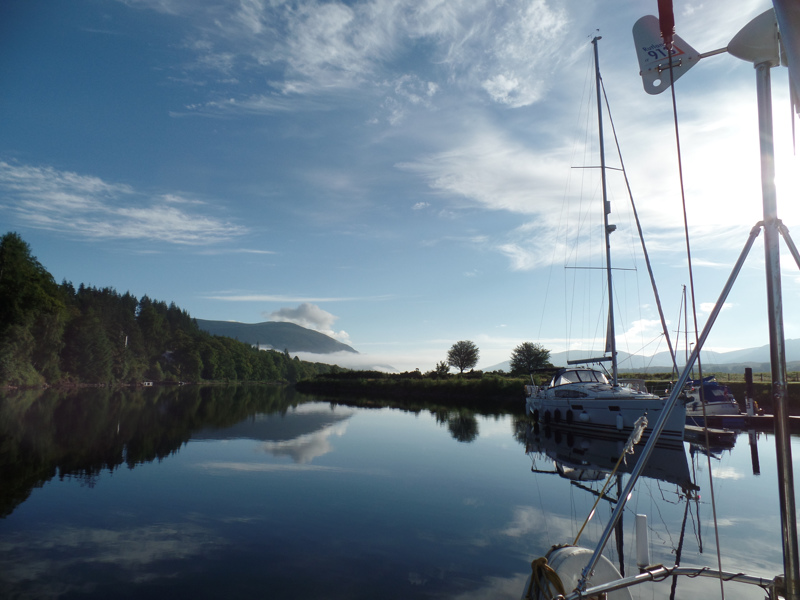
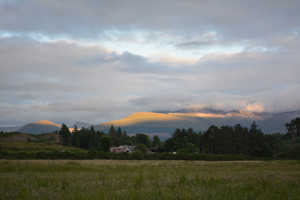
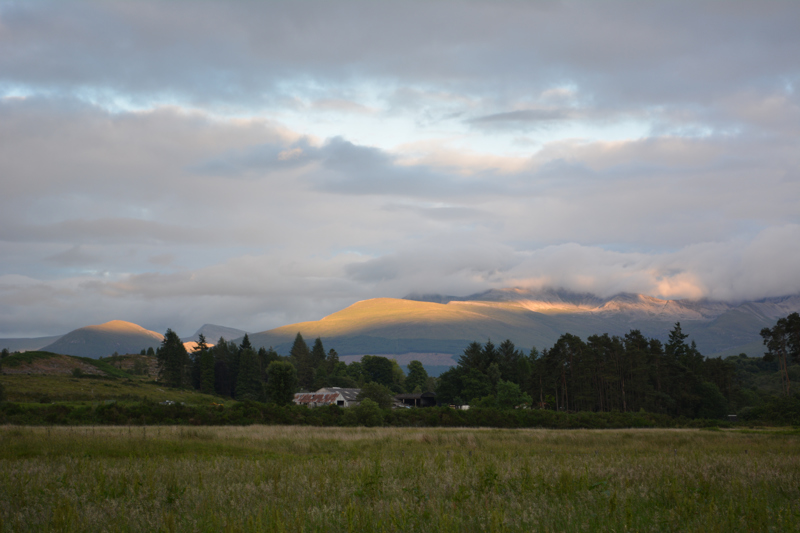
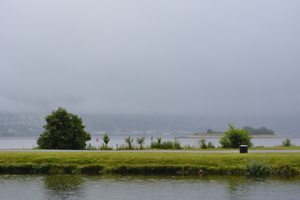
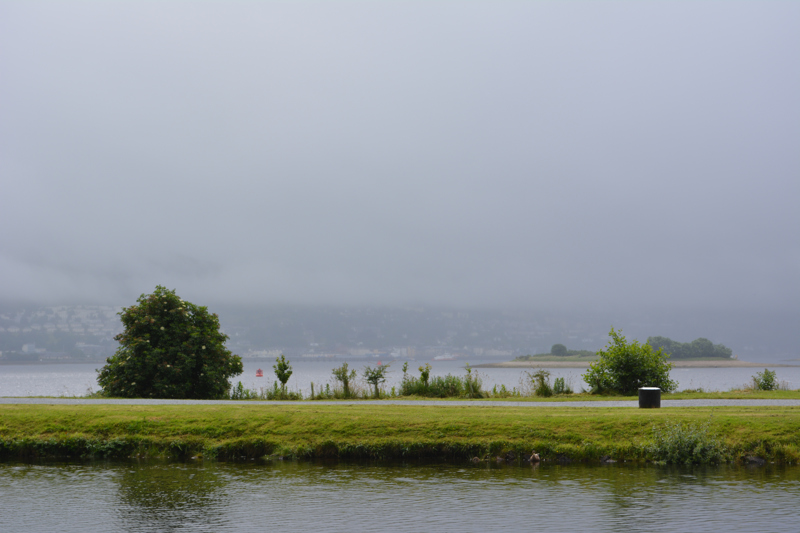
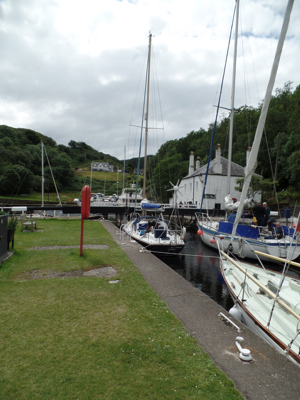
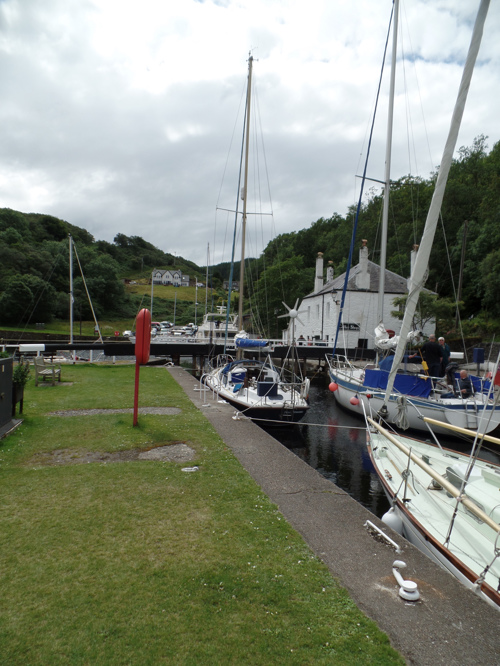
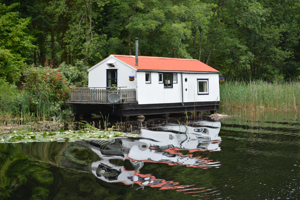
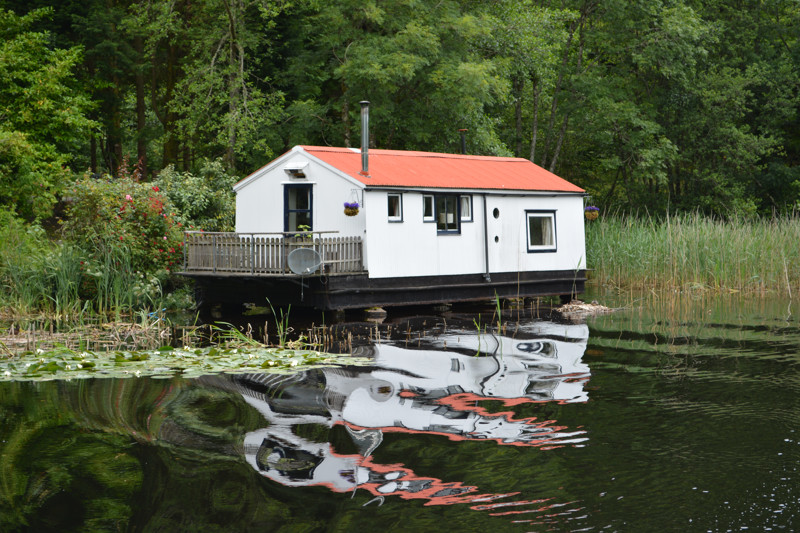
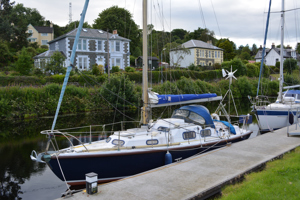
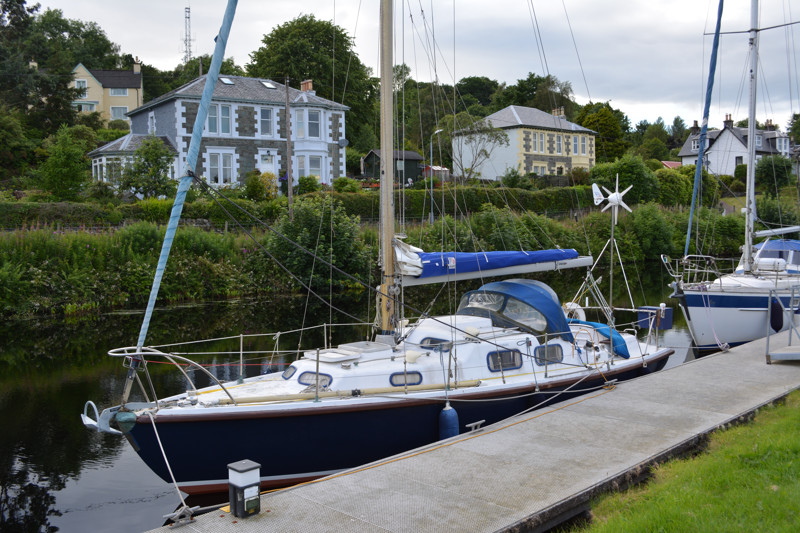
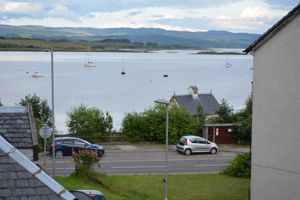
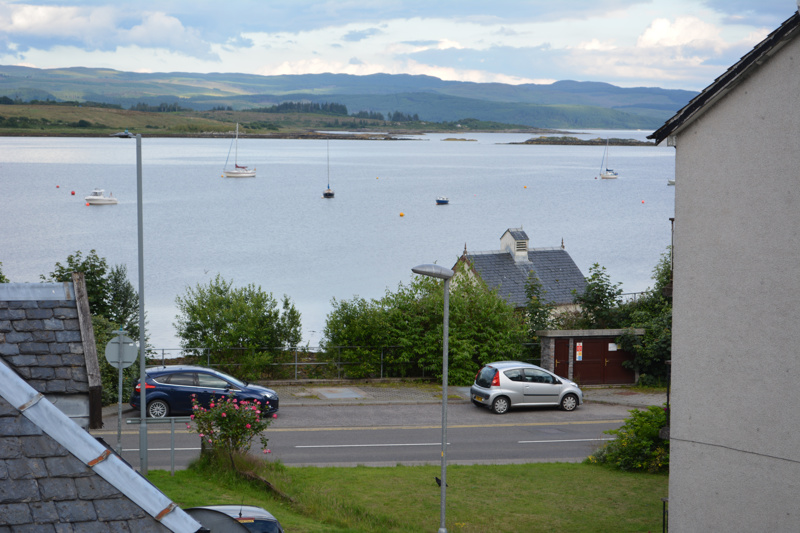
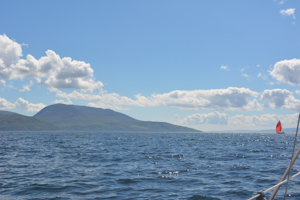
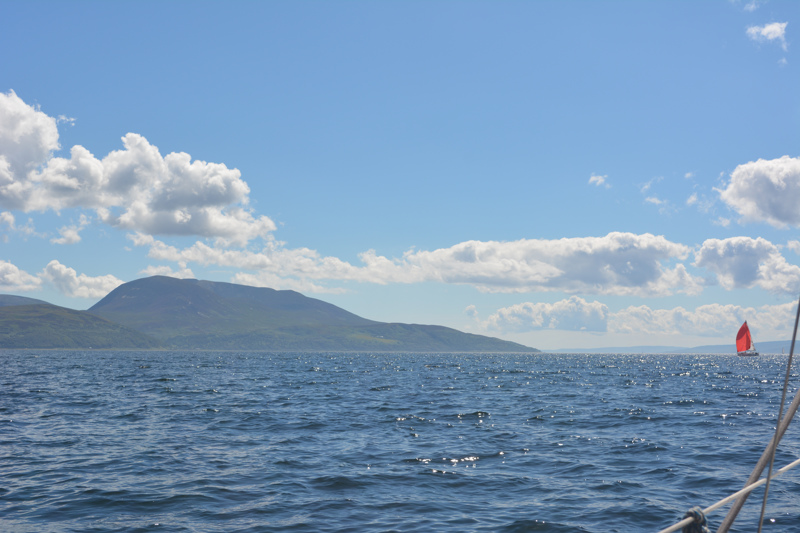
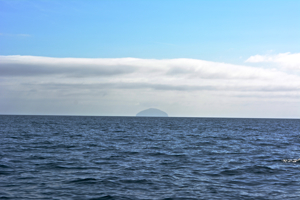
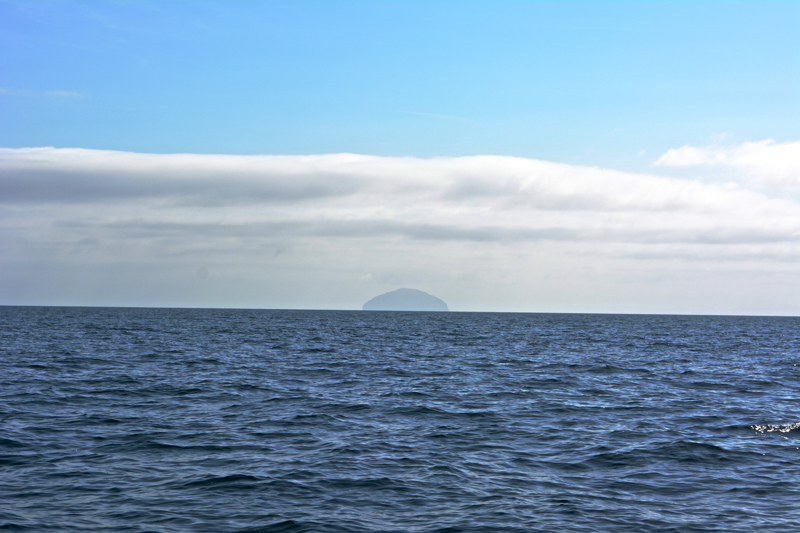
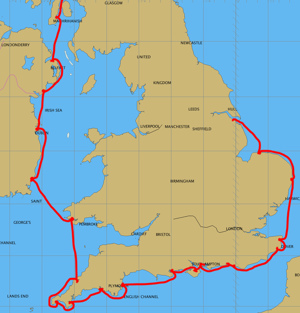
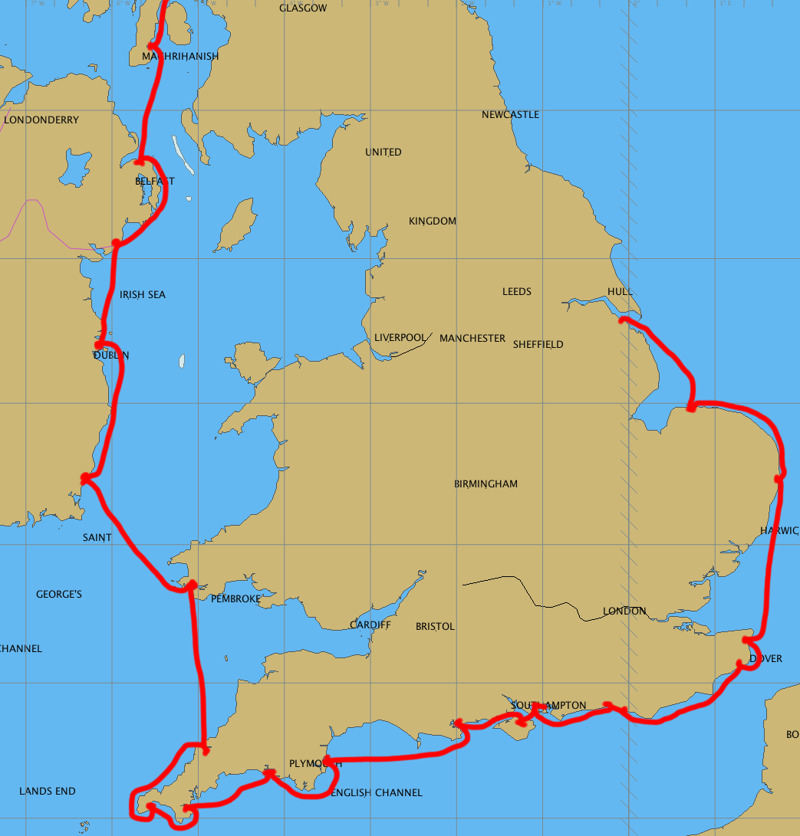
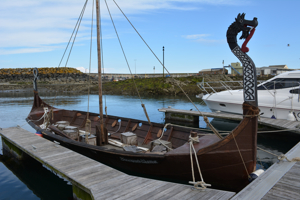
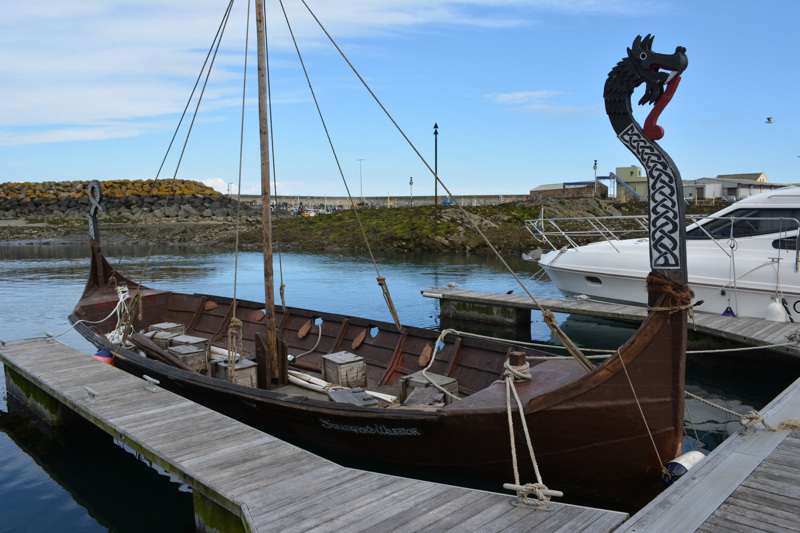
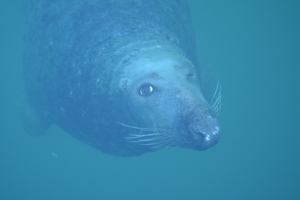

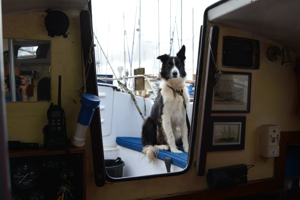
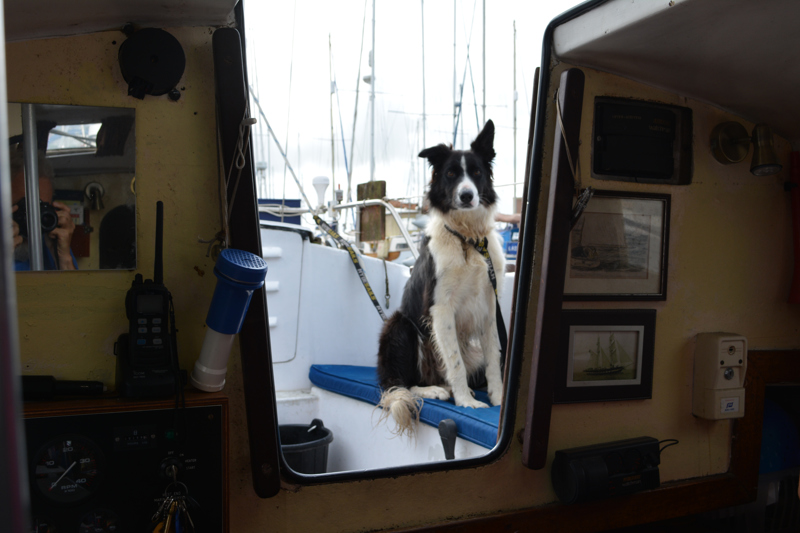
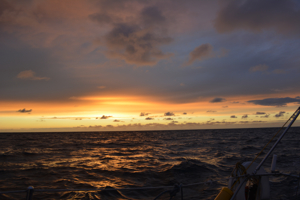
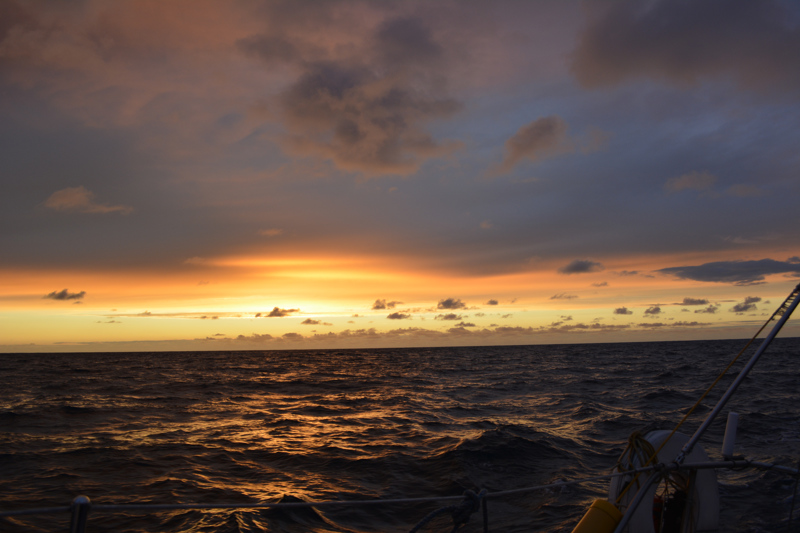
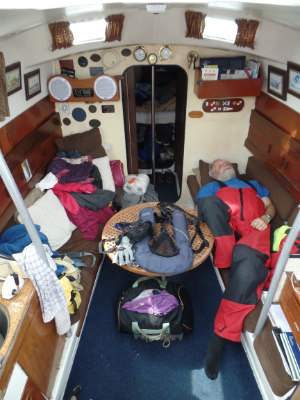
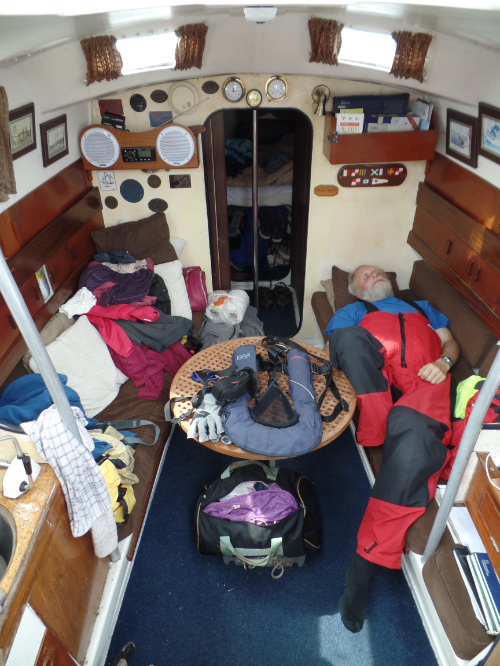

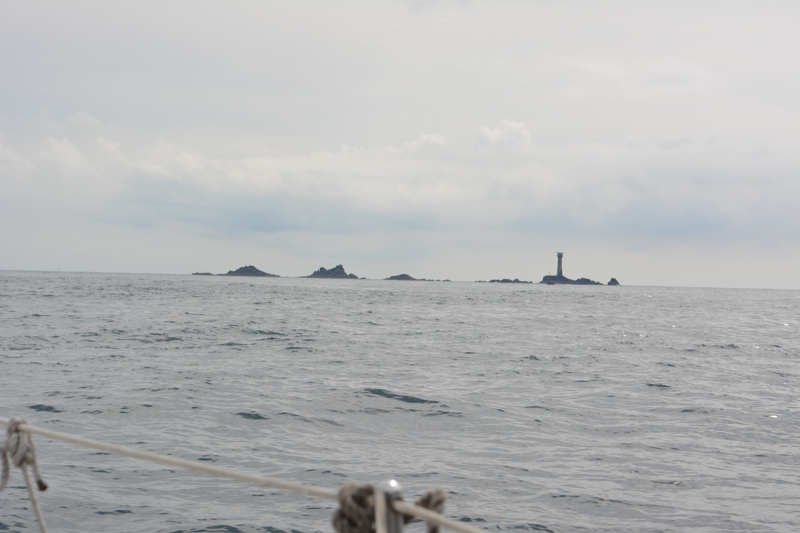
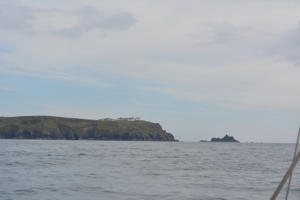
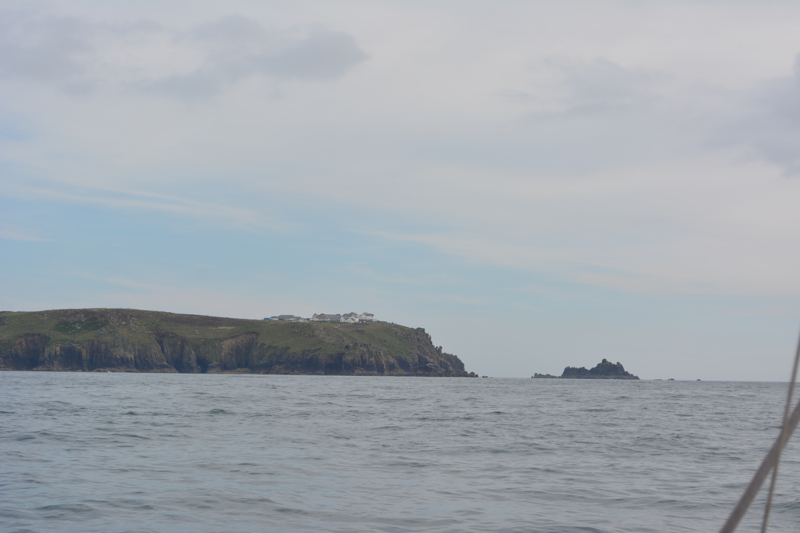

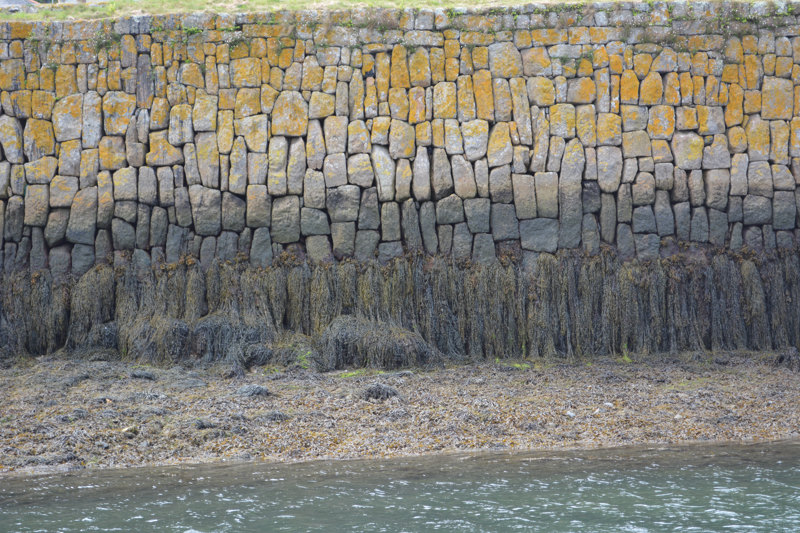
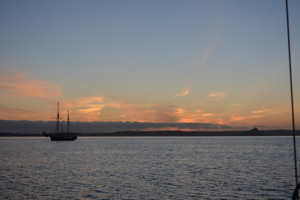
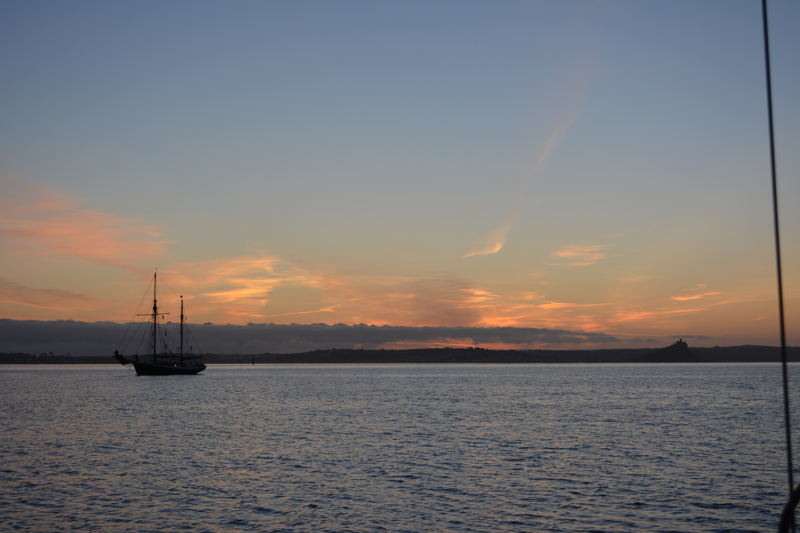
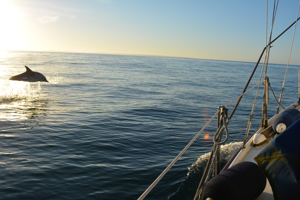
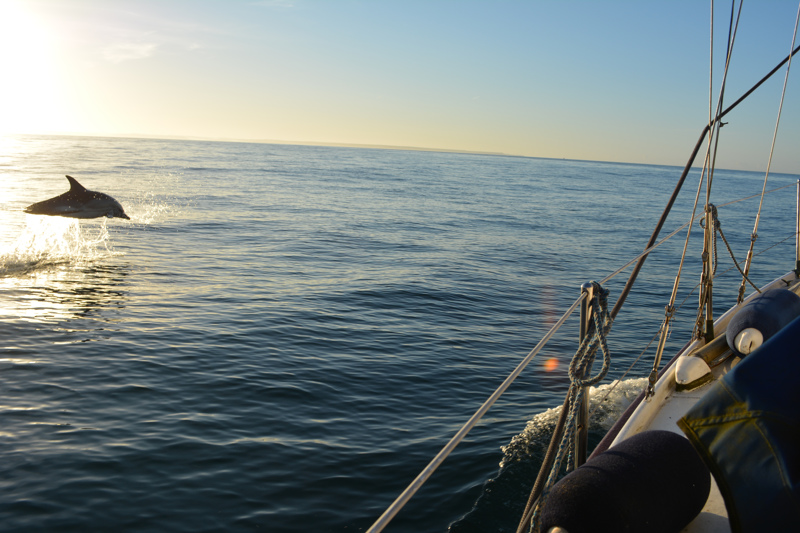
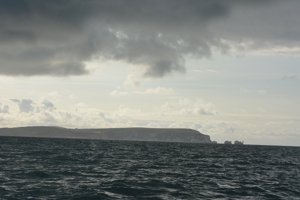
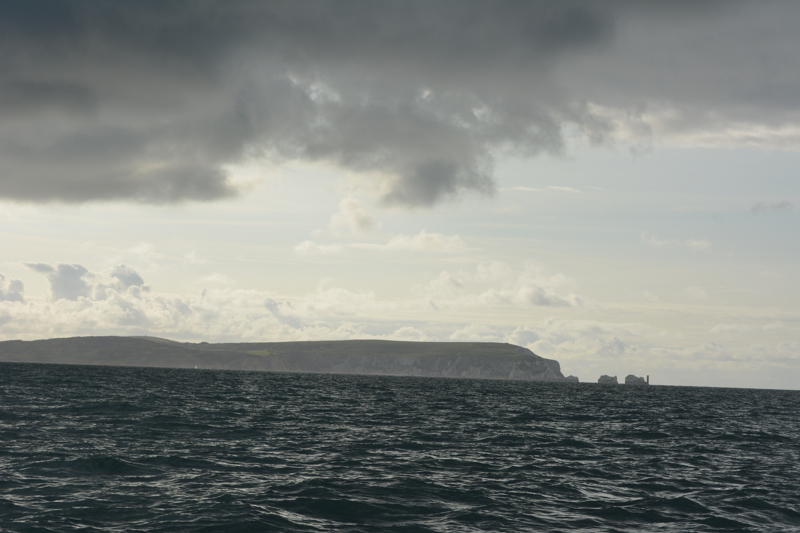
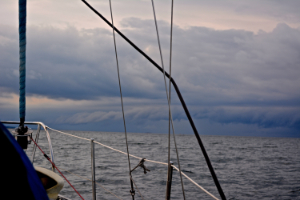
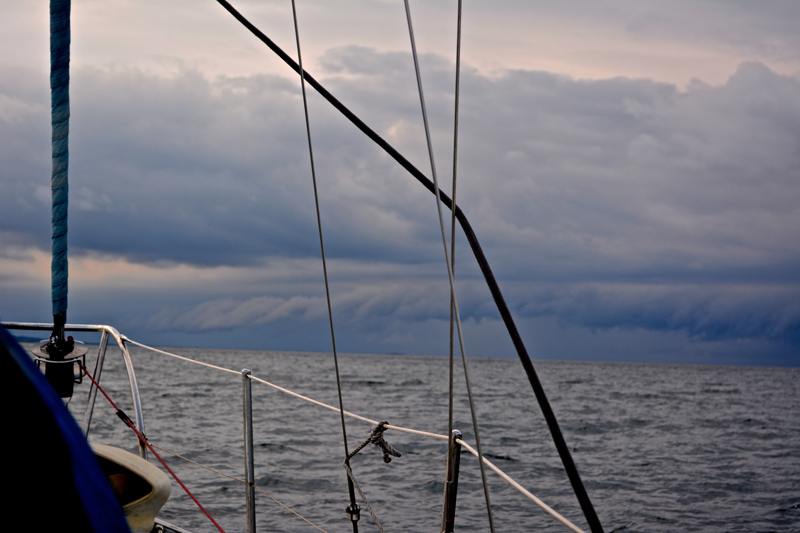
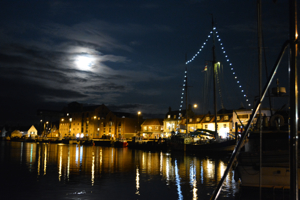
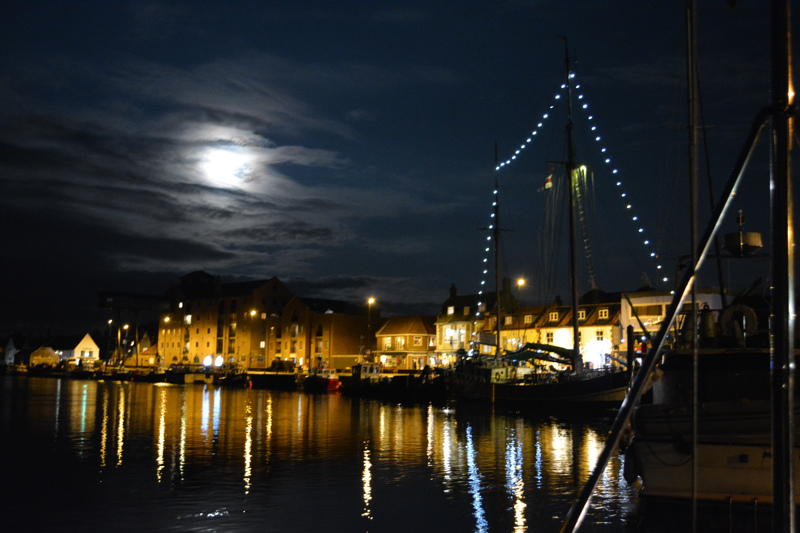
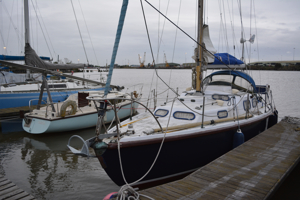
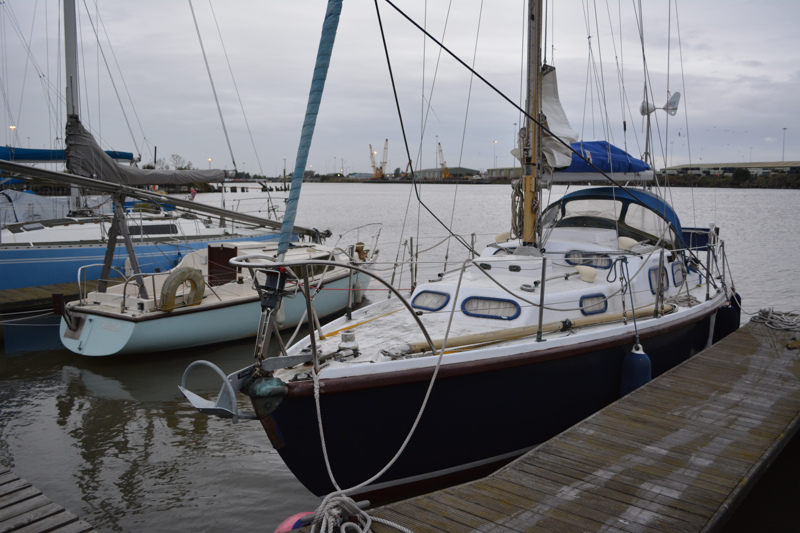
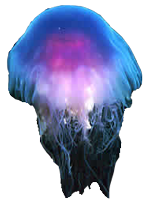


III - Penultimate's Progress (ii):
A Quick Pop Round Britain
UK circumnav 2017 (or: How I Failed to Reach the Rally)
Becoming 70 last year I had (as someone once said) 'resolved' on a voyage around Britain; what better way to celebrate? But the timetable proved short of time. This year, however, turns out to be blissfully clear of commitments, and without much ado (all the charts and pilot books having been laid-in last year) I set off at the end of May, heading north. A promised crew has been unexpectedly delayed so I am (as usual) single-handed at this stage.
Plodding down the Humber and out round the Binks, my intention is to keep it simple; no Pentland Firth heroics, just a quiet unpretentious anti-clockwise cruise, hopefully calling in at Cowes as usual for the Kingfisher rally on August 12th. I've never sailed north of Bridlington; impatient to improve on this, I head for Flamborough in changeable weather, ready to duck into Brid at a moment's notice, but it holds and I reach Scarborough, greatly impressed with seeing puffins and guillemots so soon. Here the fish-and-chips fail to attract me, and I head on to Hartlepool next day in more fitful weather, just squeaking the shallow entrance channel after misunderstanding the sector lights.
Pleased with this rapid progress I set off for Amble, holding Blyth as a reserve possibility; just past Blyth I encounter an apparently random collection of cardinal marks wholly unknown to my charts, presumably marking some temporary danger I haven't heard about, but no harm ensues. Approaching Amble, I decline to risk the highwire-act channel south of Coquet Island; it's a nice enough day and the usual longer route isn't a chore.
Next day the fitful weather finally breaks. The first of a string of Atlantic depressions hits, the same ones that took out a bunch of yachts racing towards the American coast with the loss of at least one boat, thankfully with no casualties. Amidst lashing rain and wind I watch the barometer practice high-diving and in the lulls amuse myself photographing eider ducks, even managing a stroll to Warkworth (Amble's very up-market neighbour) between torrents.
After a week or so the rain relents. In company with a couple of other boats and a folding trimaran (larger sister to one back at my Grimsby home club) sailed by an old couple who've been round Britain several times and refer to it as "doing a lap", I set off for Eyemouth via the Farne Islands. It's a lovely sailing day; just into the inner channel through the Farnes the wind picks up sharply and I have to reef - Penultimate doesn't like full sail much over fifteen knots - but this doesn't spoil things. The trimaran has rapidly disappeared, but I'm pleased to keep ahead of one of the others (a 40' ketch) for much of the way in an improvised race. The little mad puffins are splendid.
Entering Eyemouth I am feeling a little more confident and take the short cut south of the Hurkars, a vicious set of rocks which the pilot book assures me "shelters" the entrance. Coming into the harbour, a small gang of seals swim across in greeting but retreat when I declare myself fish-free. I moor ahead of the trimaran and behind the other two companion yachts, the seals meanwhile putting on a very polished performance for the tourists, whose measure they've clearly grasped. Later someone wishes to raft with me; rushing to help him I have a minor accident with the port nav light, catching it just perfectly to knock the coloured casing off - I watch it roll overboard and disappear with a shy splash. Next day I manage to recover it with the aid of a spring tide, a small fishing net and a lucky squint of sun which shows it lying accessibly on the sandy bottom which my keels are about to hit. Then the weather closes in again, and I lose another week.
The plan had been to stop next at Arbroath but these holdups are getting to me and, desperate for some mileage, I elect to head straight for Stonehaven (a place I last visited several years ago when I collected a Scorpion dinghy impulse-bought on eBay). The trip is longish but unproblematic, except for a vicious little wind right on the nose that springs up when we're four miles short of Stonehaven and punctures our complacency with an uncomfortable extra hour of short sharp chop.
Stonehaven offers the first top-class fish-and-chips of the voyage, well worth the long walk round the bay. It's a lovely little harbour and a pleasant town, and I'd like to see more of it; but I'm hungry for mileage and set course for Peterhead, the first real technical problem of the trip on account of its proximity to Rattray Head, the first Big Corner. As it turns out I have plenty of time to contemplate this, because the weather about-faces again and I'm forced to sit out yet another week with mounting frustration. After relentless northerly gales, with driving sleet and a daytime temperature never topping nine degrees, a 24-hour weather window opens up with a threatened easterly gale to follow. Abruptly, I decide to ignore all the small harbours along the Moray Firth that I might have visited (why go into Lossiemouth with a threatened easterly? You won't get out again for another week!) and opt for an overnight sail directly to Inverness, 95 miles.
The weather looks good and I set off in the early evening, but have failed to take the swell into account (oddly, as I'm used to allowing for it in north Norfolk); it's so unpleasant getting out of Peterhead that I momentarily consider turning tail, but am spurred on by the prospect of another week in prison. In the event, it becomes more regular quite quickly; Rattray is passed without incident and we turn west for Inverness. It's an impressive northerly swell left over from the week's blow, which bends to follow us as we proceed along the coast until it's on the starboard quarter; the wind itself is south easterly, throwing up shorter, lumpier waves on the port quarter any time it can find enough fetch in the bays. The result is complex; once darkness falls, everything is seat-of-the-pants: "ah, she's lifting like that; if I give her this sharp tweak on the helm just at the top, she'll surf nicely" - until you misread which wave system is pushing you, and have to spend the next minute or so getting her back in rhythm. But it's a nice night, close after solstice and not seriously dark. The autohelm is useless in these swells, of course, but by Scotland I've picked up a temporary replacement for my delayed crew (infinitely delayed, as it turns out; they never do show up), an old friend who now proves invaluable in the coffee and pasties line.
Coming through the channels below Inverness, with the swell still inexplicably working in where it has no business being, we round a sand-spit entirely covered in Eastern-looking people with uncountable camera tripods, apparently studying seaweed in chorus. It turns out that the Moray Firth is famous for bottle-nosed dolphins and this spit is a favourite haunt - of course, there are none to be seen.
At Inverness, after negotiating the interesting and highly-visible differential tides under the Kessock Bridge, we finally fetch up at the sea lock and moor in the Caledonian Canal at Seaport Marina, where solid rain pins us down for a couple of days. I take the opportunity to ransack Gael Force chandlers, replacing the bow fender (which the swells thieved by night somewhere along the Moray Firth) and finding a newer pilot book for the North Channel.
The rain relents, though not the wind, and we set off down the canal - surely this won't be difficult? We bowl past Dochgarroch and past the lengthy weir system to port, and round the bend Loch Ness opens out. Of course, I haven't calculated on the wind funnelling down the Loch with such strength, nor on what twenty miles of dead straight fetch will allow it to produce by way of sea. Everything on the nose, a vicious lumpy dead-stop chop, thirty-plus knots of wind, poor Penultimate hardly making three knots at full throttle - after a while I decide that as I've come all this way I'd rather see Loch Ness, thank you, and (applauded by the crew) turn for Dochgarroch again where, comfortably moored, I watch a series of hapless boats steam confidently past and return a little later looking chastened. "You've never turned back before", I muse to myself darkly, "you'd better have something to show for this down the line, Mr Wuss". "But surely we do this for pleasure?" I reply, "did you want it difficult? because if so, you won't be disappointed later". I glower back at myself in silence.
After a day or two the weather improves. Take 2 goes much better; after a fine cruise, we moor at Fort Augustus. Next morning there is a bit of a circus in the lock staircase; this is full of hire cruisers who have not had the concept of rudders explained to them, relying instead on bow thrusters for all basic manoeuvring - rather than steering to the side of the lock where they wish to end up, they tend to motor into the exact centre and then go sideways, a practice I find distressing. A flustered couple are in danger of denting us amidships. I am sitting quietly in the cockpit drinking a cup of tea. "If you pull that rope there" I eventually say pleasantly, after watching the panic for some time, "then you'll come straight and everything will work". "All right all right" he vibrates back, sweating, "no need to get upset". There's quite a lot of this kind of thing and I quickly learn to be looking elsewhere.
The canal now leads into Loch Oich which, in strange contrast to the vasty deeps of Lochs Ness and Lochy, is so shallow as to necessitate all boats following each other in school crocodile through a buoyed channel. The wonderful un-photographable mountains (cameras do surfaces, not volumes) remain consistently spectacular throughout, of course.
Mooring at the west end of Loch Lochy, the clouds and light over Ben Nevis change incessantly; "OK, just one more shot" I keep saying, until the memory card finally runs out.
Next day it's time for the final descent to the sea at Corpach, down the astonishing Neptune's Staircase locks (nine of 'em). A small holdup gets us out of step with the lock team, who don't wish to start another batch through after early afternoon, and we lose another day, finally mooring in the basin before the Corpach sea lock, where I have the rare opportunity to film a working steam train without leaving my cockpit.
Back at sea after what seems an age, we head for Oban, followed by an old couple we met at Corpach, heading home to Wales. They are a little far off their normal track and nervous; there is some on-going dispute between them as to how pleasurable this kind of thing might be. We rattle down towards Loch Linnhe and slalom through the tide rips at the Corran Narrows, then head on a tricksy little route inside Lismore Island. I'm slightly worried at acting as pilot; what do I know about all this? But they follow tightly and we reach Oban intact. The next leg is a tricky one down the Sound of Luing to Crinan, involving not getting sucked into the whirlpools at Corrievreckan, the Grey Dogs, the Dorus Mor and suchlike infamous locations. The weather isn't sitting right and I propose to wait a day, but the chap of the couple wishes to be off and seeks my opinion. He's timing it to get the first of the good tide at the Dorus Mor, not the last, and will therefore have tide against him (eight knots in places) for much of the trip, with a headwind. I suspect that he's going to bash against wind and tide till the eight-knot stretch, which he will then stick against for some hours until he can complete this leg with wind against tide in the worst of the tide rips and whirlpools. I think you'll have a bad time, I say, but they go anyway; I ask him to text me when he arrives at Crinan.
Next day the weather is excellent and we proceed to Crinan without mishap, very impressed at the many and varied whirlpools we're sailing through. No text arrives.
After the Caledonian (which was built for warships), the Crinan (which wasn't) is almost a miniature canal, a model; in places, two boats can't pass. You must work the locks yourself. But it is pretty and quirky, and saves the long haul down the outside of Kintyre and through all the mess at the southern end. After a night at Ardrishaig, we go on to Campbeltown, leaving the glories of Arran to port for exploration another time.
At Campbeltown another week is lost to weather. Though we're well up a sea inlet, an unlikely swell sometimes works in at the top of the tide and sets the pontoons bobbing so violently it bends one of poor Penultimate's mooring cleats. Campbeltown, however, has its compensations; it's the only town in Scotland that counts as a whisky region in its own right - it once had 27 distilleries. Even the Co-op is selling decent single malts at £20 a pop. As at Eyemouth, the seals have learned to put on a good display for the tourists.
The route is meant to go on via the Isle of Man, Holyhead and the Welsh coast to Milford; but now it occurs to me that the Irish coast might make a better option, as only one leg (the last) would be lengthy and it would avoid all the tiresome backtracking into Pwllheli. Accordingly, as soon as the weather brightens we set off for Bangor; I am very thankful for the new pilot book I found in Inverness. I had expected trouble in the North Channel, but it's in a good mood. Turning into Belfast Lough, we almost run over a minke whale which crosses our path about 50 yards ahead, very serious and professionally intent on going somewhere. Much later I tell my grandchildren the tale of the voyage. Six-year-old Tom looks thoughtful. "Did it have a white stripe underneath?" he asks, "because then it would have been a northern minke whale". "I dunno", I answer, "I just sail boats. It was just minke-whaling along, curvetting slowly through the waves; couldn't see underneath".
There is still another weather holdup at Bangor. It's a big town after what we've been used to; the harbour has special nesting boxes for (very rare) black guillemots. Yet again, we bump into several of the boats we've been seeing since Amble, one of whom promises to email a photo he took of Penultimate off Dunstanburgh Castle. I purchase charts for eastern Ireland, which I hadn't reckoned on needing. Finally a text comes from the Corpach couple; yes they made it OK, yes, they are home. The text is reticent about the Sound of Luing. I hope they'll sail another day.
The weather is set to be acceptable for my birthday; in celebration, I plan to rise at 2.15am in order to be off at 3 for Ardglass. As an extra, I'm proposing to go through the Donaghadee Sound, inside the Copeland and Mew Islands, saving several miles; it's an awkward bit of water, chock full of tide rips on the chart and with a sharp dog-leg halfway down, putting you sideways-on to the tide. One pilot book says "on no account go through the Donaghadee Sound", the other says "this is a normal route for yachts". I favour the second.
The early start is not assisted by a municipal festival the previous evening involving 37 marching bands doing their thing, one after the other, till very late. But we blear up and get going; Donaghadee is a fun waterslide in the dark, but somehow I stop Penultimate being whirled in circles and steer round the pairs of lights, feeling rather smug to have done it in the dark as the islands finally drop astern. We arrive at Ardglass in time for (very) late breakfast, mooring near some splendid replica viking ships - proper working boats, not toys - which have starred in a number of films. Later a one-eyed seal makes its way across in case I have any spare fish; we have an extended wordless conversation (like you sometimes do with babies) over the cockpit side, and I get some good photos through the exceptionally clear water.
At Bangor we had noticed "Miss Isle II", a very sharp-looking mini-Transat style racer sailed by a quadriplegic girl controlling everything by mouth, and currently voyaging all round the Irish Sea; now it seems she's due in Ardglass, as her support team turn up ahead of her. Later she sails in triumphantly.
Eager to pack some mileage into this patch of good weather, we head for Dublin (Howth), where we see no more whales despite the rather fetching spout-sign warnings in the chart plotter, and then on to Arklow, where we arrive at 6pm. A weather check suggests that if we don't get off tonight, we'll be in Arklow for a week; it's an interesting place and a wonderful bit of coast, but I'm getting worried about the Cowes deadline, so after a quick look round town and a hasty meal we sleep for a few hours, setting off for Milford at midnight on the next available tide. Unlike the Moray Firth overnighter, this one is black as only darkness at sea can be. I position my crew on the foredeck for the first hour or two to watch for pot buoys; later she admits the depth of dark caused her a moment's panic, but decided she liked it.
The Irish sea is thankfully crossed without incident, apart from our being held up by an idling tanker outside Milford; I'm pleased to have avoided Bardsey and Ramsey Sounds after horror stories about forty-foot standing waves. My crew regretfully heads off home.
In Milford we're moored next to Martin, an ex-naval man from Gosport (Haslar) with his dog Jack, whom I look after whilst Martin seeks supplies. He's been on the Three Peaks race, which involves sailing with a team of mountain runners who race up and down Snowdon, Scaefell Pike and Ben Nevis, collapsing in the forepeak between times whilst the boat races to the next location. No engines can be used, and as the obvious route to Snowden is via the Menai Strait and "the Swellies" (requiring tidal timing to the minute) this must have sorted the sheep from the goats pretty rapidly; as a confirmed slug, I can only admire this physicality.
After a couple of days waiting for weather and sampling the excellent fish-and-chips from Gordon Bennet's along the quayside, I have a mishap. Blearing out in the middle of a very blowy night to dissuade the mooring lines from snatching, when getting aboard again I mistake the pontoon and try to stand on water, which is never a good idea; in the resulting scuffle I graze an arm badly on a shroud and land heavily on my right knee with leg at a bad angle, tearing a ligament. This is irritatingly stupid and a reminder that you never, ever relax when dealing with water.
I'm prescribed heavy-duty anti-inflammatories; I summon back my crew, who is now a necessity rather than a luxury. After a few days' convalescence, I propose an overnighter to St Ives, not Padstow as I'd intended. I lay off the pills for 24 hours and we set off in late afternoon, waiting for the tide on the visitors pontoon at Dale, near the entrance; an awkward swell is already working in and makes this uncomfortable. Finally we set off in the last of the light, both keen to find out how much use my knee will be. Going out through the west channel (locally dubbed "the washing machine") is seriously unpleasant; the swell is hurling us everywhere. My crew suggests that if it's going to be like this all the way to St Ives it won't be viable, and I agree; we turn tail ignominiously and head back to the marina. Safely moored, I realise straight away that I've been very stupid. I wasn't carrying a mental map of the seabed as I normally would; had I been doing so, I would have remembered that the nasty stuff surrounding the channel goes on well out to sea after the land has dropped away. We gave up in what was essentially a harbour bar situation, another mile or two and it would have smoothed down. My excuse to myself that pills cast a long shadow and I should have stopped them earlier is no consolation; it's now very unlikely we'll makes Cowes by the 12th.
A couple of days later when the weather and swell improve, we set course for Padstow, again as an overnighter. There's still a fairly serious swell, but the direction is better and things are comfortable. A gang of about twenty dolphins follow the boat for hours, doing all the usual tricks; nobody could feel bad around dolphins. After they leave, we're regaled with a series of spectacular sunset variations. The Bristol channel turns out less frightening than advertised. A circumnav book had dire tales of seasickness, against which possibility I had deployed my boat's powers. Penultimate has a wonderful capacity for producing (like the magic porridge pot in the fairy tale) anything you think of hard enough. For instance, the washboard seat: I find it useful on long watches to sit in the companion way on the top edge of the first washboard and had planned to improve this with a seat, just a short plank with a couple of inch-square pieces to steady it. All this was carefully planned and therefore when, on ransacking a little-used shelf in the hanging locker, I found a short plank with two inch-square pieces fitted underneath, I knew instantly what it was. Likewise, after the book's warnings my crew suggested buying the anti-seasickness pills recommended. "No", I said, "look in the medicine box", and lo! there they were, even the right brand. (Of course they were never needed, but that's not the point...).
It's only 65 miles from Milford to Padstow, and you're never quite out of land contact; you pick up Lundy before you lose the Welsh coast, and Cornwall before you lose Lundy. Somewhere in the middle I spot a series of red lights which (as always) could be half a mile away or twenty miles; I worry for some time that they're marking some temporary danger - there shouldn't be anything out here to mark - and expend much concentration. They turn out to be on top of some masts on the hills behind Padstow, nearly thirty miles away.
I'd planned this leg as a classic cross-tide gambit, steering a straight course and allowing two tides to cancel each other out. The plan was to arrive at first light, as I didn't want to navigate the Camel river in darkness. But the tides of the Bristol channel are slightly dog-legged, favouring a north-south crossing; my plan works too well, and we arrive off Padstow in pitch dark, far too early. I try to kill time outside, but the swell is just too uncomfortable and eventually I pick my way gingerly up the river, noting that there are several misleading shore lights and the first starboard channel marker is well inside the Doom Bar (a nasty sandbank famous for wrecks), which seems unhelpful. We reach the tiny harbour entrance; the harbourmaster directs us in, but it's been a long night and I can't find anywhere to berth. I head outside again to a tripper boat pontoon. It transpires I was meant to raft, but it seems mean to wake people this early and I settle for an hour or two's doze until informed that the raftee is in fact awake and about to leave, at which we finally moor and collapse.
Padstow is packed with trippers, many of them sitting along the harbour wall and dangling their feet directly over us; we're very much on exhibition. But the feel of the town is good and I'd like to spend more time exploring. I treat myself to some of Rick Stein's fish-and-chips, which are worth their reputation - this is turning into a fish-and-chip cruise.
Another boat has rafted outside us, and now we're both leaving simultaneously for Newlyn. There's a big Atlantic swell from the north west, a northerly wind, and we're going out of the river on a spring tide against the lot; it promises to be unpleasant for the first hour or two, and is. There is of course no margin in the planning, because of Land's End, our second Big Corner.
Land's End (as any fule kno) has asymmetrical tides; nine hours going north, but only three hours south. It's only possible to get useful time for a southward journey if you use the complex contrary inshore eddies, which (curiously) are unmentioned in the Admiralty tidal atlas dedicated to Land's End and can only be found in Reed's Almanac. They require you to keep very close inshore, which in turn means they're wholly dependent on wind and swell conditions. Planning is thus a complex three-way juggle with wind, swell and tides (which ideally should also conveniently change direction as you round the corner), necessitating timing accuracy to within 15 minutes, regardless of how far you're coming from.
The swell angle improves once we're clear of the Camel and its off-lying rocks and islands, and we bucket on down towards St Ives. Our rafting friend, single-handed and some way astern, gets a spinnaker up, no mean achievement as simply staying on the foredeck in these conditions is almost impossible without a third hand, never mind doing anything when you're there. I mean to ask him how he rigs it, but he unexpectedly goes on to Falmouth and we don't see him again.
I'm tremendously impressed by the north Cornish coast and the old tin mines. We squeak Cape Cornwall with minutes to go, work the eddy round the Brisons and well inside the Longships light, and pass Land's End itself and then Gwennap still with tide to spare, getting into Newlyn in early evening feeling very pleased with ourselves.
The pilot book says that Newlyn is "run by a handful of hard-case fishing families to their own unwritten rules"; experience suggests this to be accurate. We sample an unsung but superb fish-and-chip shop based on local catch, every bit as good as Rick Stein's. Newlyn is the down-market poor relation of Penzance next door; in contrast to Penzance (which has been Brightoned) it's a rough working fishing port, but I find it very congenial. A young Swedish lad arrives, single-handing, his head full of sea as such folk often are; he's just sailed non-stop from America to western Scotland and then down past Land's End. He tells a modest tale of (on another occasion ) nearly sinking in the Bay of Biscay after being knocked down whilst breakfasting and having flying gear slice off the seacocks. As so often, I'm reminded just how much out of my class this kind of thing is, and feel a deal less pleased with myself for merely getting in from Padstow without wreck.
Leaving Newlyn in the early morning, we again encounter a dolphin gang leaping ecstatically right in the sunrise with complete disregard for photographic necessity. We round the Lizard and make Falmouth without problem, quickly passing on to Plymouth and then shaping up for Dartmouth. Shortly after rounding Start Point, the last of the Atlantic swells plays one final trick; wedged against the companion steps, pouring boiling water into a cup, I'm first dislodged then thrown violently against the sink. I save both kettle and tea, but an often-troublesome disc in my back takes offence, and by the time we reach Dartmouth I am fairly incapable. More anti-inflammatories are deployed and after a few days things improve (I can walk more than ten feet without stopping), but it takes the edge off the stay, even though this is the second time on the trip I'm able to see a working steam engine from the cockpit.
Eventually we set sail for Poole, arriving in the dark after avoiding a threatening fog bank which providentially is blown away in the nick of time by an unexpected offshore breeze. We negotiate the harbour well, but have difficulty getting into the (very expensive) marina, which is not well lit and whose radio is unmanned. When we finally guess ourselves a berth, my crew whilst mooring upends herself on a very slippery pontoon and acquires two black eyes. Next day whilst she is attending to these I engage the neighbouring three-storey motorboat in conversation. Innocently, I ask them where they take it. "Oh", they reply, "we went as far as Studland once".
A slight feeling of anti-climax sets in; I'm nearly back in known territory. We do a short 25-mile hop in the early morning from Poole to Cowes; the weather is good, but I take the opportunity to try out the north channel route for possible future use. We enter the western Solent at the top of a full spring tide, doing eleven knots over ground through Hurst Narrows without surfing, a record for me - previous best was 9.5 knots off Cromer (but that was surfing). The surface of the sea looks familiar; I realise it is full of incipient whirlpools of a kind I last saw in the Sound of Luing. I don't recall any pilot book mentioning this, even if it does only happen at the top of big springs.
At Cowes, the first thing we see ashore is "Miss Isle I", predecessor of the Miss Isle we met in Ireland; she is being used to train other similarly disabled sailors. I discover there is an excellent website devoted to all this splendid activity (well worth your attention). I have a brief pang at missing the Kingfisher rally; I was looking forward to saying nonchalantly "ah yes, I thought I'd pop down from Grimsby via Scotland this time".
A short practical hop across to Gosport and Haslar; I look up Martin, but it transpires he's having high jinks in Fowey and won't be back for ages. Thence to Brighton (where my crew departs definitively with her black eyes), Newhaven (for nostalgia), Dover (where two of the historic docks are being filled in for a lorry park plus yuppie housing and for the first time I find the Royal Cinque Ports YC dark and shuttered) and Ramsgate (where I find the Royal Temple YC pleasantly open). And now the sense of anti-climax is mounting; I know all this part backwards, Penultimate could sail herself home.
We cross to Lowestoft; around Long Sand Head an unexplained south-westerly swell develops, which I assume is a local effect of the sandbanks and will disappear. It doesn't, instead engendering surfing to a point where it becomes necessary to slow down to avoid piling into the back of the next wave, so short is the wavelength, though the wind is nothing special. This speeds up the normal tide-pattern routine; instead of the customary one-tide-till-past-the-Harwich-shipping-lanes, one-tide-on-the-nose (sometimes making barely two knots) from-Orford-to-Southwold, and then part-of-a-tide-moving-fast-again-to-Lowestoft, we reach Lowestoft at the top of the second tide, after a hair-raising ride when the on-the-nose flow shortens the waves to a ridiculous extent. It takes only a shade under 12 hours; unexpectedly, I arrive in time to avail myself of the splendid food at the Royal Norfolk and Suffolk YC.
Going on next day towards Wells, the weather is fitful; I hope I'm not going to be seriously held up so close to home. Near Sea Palling, what appears to be a trawler is steaming towards me; I change course shorewards in case he has nets out, but he changes course to match. This happens a couple of times and eventually with some annoyance ("why me? You've got the whole damn' North sea to play with!") I change course to pass to seaward; he passes me close to and I see he is marked "Guard Boat". I am listening on 16 as usual, but he doesn't radio; he turns and shadows me, though I've no idea what he's guarding. I continue up the coast, keeping a careful watch. Then at Sea Palling itself, there is wreckage ashore and a string of yellow markers. I remember a news story from weeks back about some giant pipes going adrift here whilst being towed to Portugal or somewhere; surely they'd have been moved long since? But no , there they are, some floating, some awash, some god-knows-where. I steer carefully round the buoys; my shadow disappears as soon as we pass the last.
A few miles short of Wells, a vile-looking purplish storm cloud shows up to the west, heading this way; it has an unusual barley-twist formation with a specially evil look, and I'm very glad to get in before it hits. Another yacht, who's also come from Lowestoft but sailed much further out, and who I assumed was heading straight for Grimsby, thinks better of it and heads in behind me.
The other yacht turns out to be sailed by Deepak, berthing master at the other Grimsby club; he'd supervised a quick lift-out that I'd had to fix a shaft anode before leaving. Later we have a quiet beer at a quayside pub, agreeing to sail home to Grimsby in company on the morrow. I sample the excellent fish-and-chips, the last of my comparative fish-and-chip tour; I'd rate it with Stonehaven, just below Newlyn and Mr Stein - pretty good.
Next day the weather is again fitful and untrustworthy; a blow is forecast. Unusually, I've planned the leg based on last year's log times instead of working from scratch; it must be right because it's what happened last time, but just before we leave I have qualms - I can't see how this isn't going to get us there two hours early at least. We lump out over the bar, setting an agreed course straight over several things we probably should have gone round, but without problems. Each time the wind rises I think "ah, this is what they promised!", but always it drops again. Deepak overtakes me at Rosse Spit in what looks like the promised hard stuff at last, but once in the Humber it drops right away. As I supposed, we're hours early instead of tight before the Level (the open lock period) like normal; it leaves an amateurish feel. I can't be bothered with locking, I'd rather wait for the Level, so I spend an hour drifting, which enables me to contemplate the atmosphere of the river better than in the usual flurry of arrival or departure. Eventually I get the sails back up and have a pleasant hour or two's potter up and down, for all the world as if I've just come out for an afternoon's casual sail; a slightly odd way to finish a round-Britain 1500-mile trip.
Finally inside the dock, Penultimate's berth is occupied by Talitha, the little twenty-footer that started me in yachts; but the neighbouring boat is absent and I moor there. So my two boats are briefly together, side by side for the first time. Somehow it makes a fitting ending.
DH 23/10/17 [Back to Boats]
